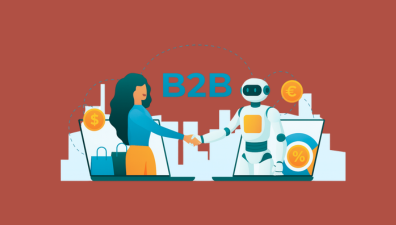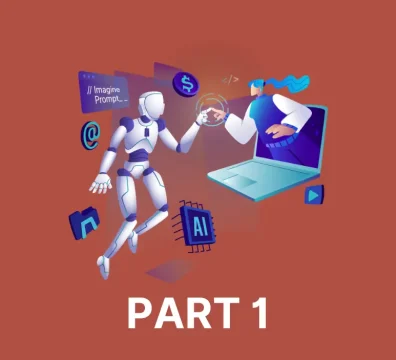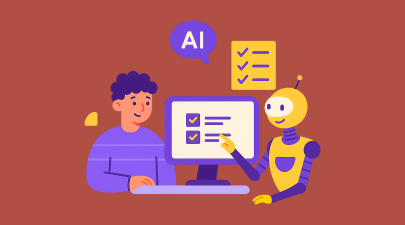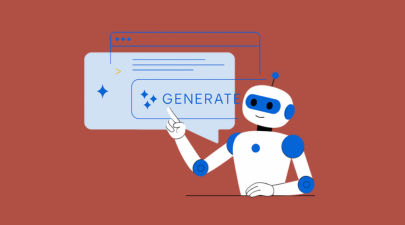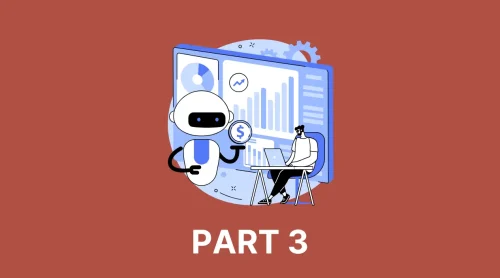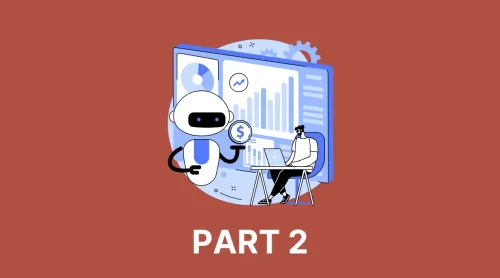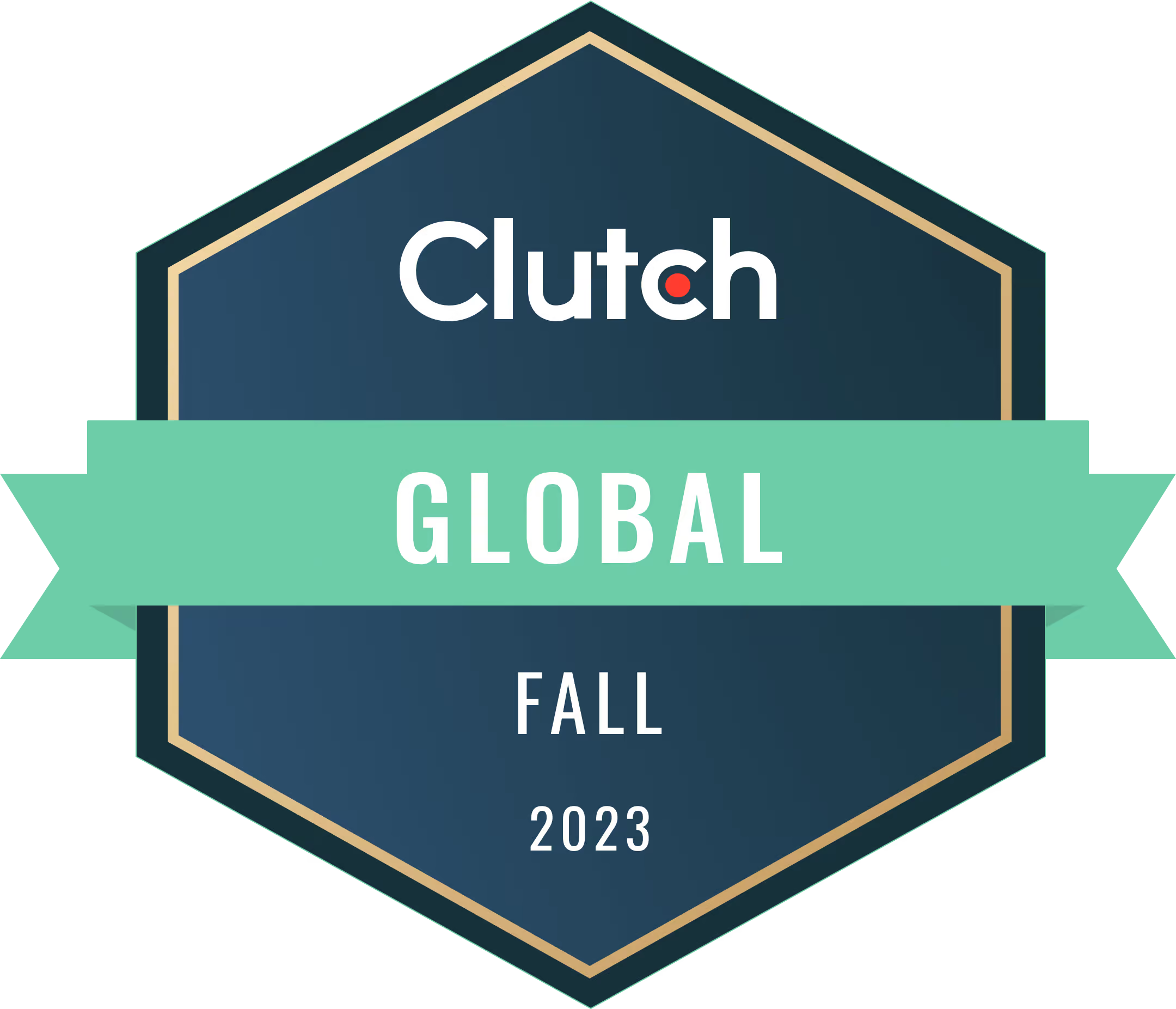For years, B2B marketing lagged behind its B2C counterpart in adopting customer-centric and personalized approaches. Long sales cycles, multiple decision-makers, and fragmented buyer data made it difficult to deliver targeted, emotionally resonant experiences. But AI for B2B marketing has redefined what’s possible. With intelligent algorithms capable of analyzing millions of data points in real time, marketers can now understand buyer intent, segment audiences dynamically, and anticipate needs before prospects even express them. The days of guesswork are over—AI for B2B marketing is transforming the marketer’s role from tactician to strategist.
This transformation is not a distant vision—it’s happening now. According to recent market research, over 80% of B2B organizations are already using or planning to use AI-driven tools in their marketing operations within the next two years. The AI in B2B marketing market, valued at several billion dollars in 2024, is projected to grow exponentially as automation, predictive analytics, and generative content tools become core components of modern marketing ecosystems. Businesses are no longer debating whether to adopt AI for B2B marketing; the question is how fast and how effectively they can integrate it into their existing systems to stay competitive.
The implications go beyond operational efficiency; AI for B2B marketing is redefining the essence of business relationships. When data, automation, and human creativity converge, marketing becomes not just about selling, but about understanding, anticipating, and delivering value continuously. This is the dawn of intelligent B2B engagement—a future where AI doesn’t replace the marketer but amplifies their impact, enabling businesses to connect more meaningfully and convert more effectively than ever before.
Table of Contents
- Understanding AI in B2B Marketing
- AI for Market Research and Customer Insights
- AI in B2B Content Marketing
- AI for Lead Generation and Scoring
- AI in B2B Advertising and Media Buying
- AI for Account-Based Marketing (ABM)
- AI for Marketing Automation and CRM
- AI for B2B Email Marketing and Outreach
- AI for B2B Social Media and Branding
- AI for B2B Analytics, Insights, and Forecasting
- Case Studies: Real-World AI Success Stories in B2B Marketing
- Challenges, Ethics, and Best Practices
- Future of AI in B2B Marketing
Understanding AI in B2B Marketing
As businesses evolve toward data-driven operations, understanding AI in B2B marketing has become essential for maintaining competitiveness and achieving sustainable growth. The complexity of B2B ecosystems—where buying decisions involve multiple stakeholders, long sales cycles, and intricate customer relationships—demands tools that can process vast datasets and deliver actionable insights. AI for B2B marketing fulfills this need by enabling precision targeting, predictive forecasting, and scalable personalization. It bridges the gap between traditional marketing logic and adaptive, intelligent decision-making.
To truly grasp the power of AI for B2B marketing, it’s important to examine the core technologies that drive it and understand how these technologies integrate into the modern marketing technology (Martech) stack. From machine learning and natural language processing to computer vision and generative AI, each of these components contributes to creating a smarter, more efficient, and more responsive B2B marketing ecosystem.
Core AI Technologies Powering B2B Marketing
The foundation of AI for B2B marketing lies in its technological pillars—each designed to process data, uncover patterns, and automate complex marketing functions. These technologies don’t operate in isolation; together, they form a unified ecosystem that empowers marketers to anticipate needs, personalize experiences, and enhance engagement across the entire buyer journey.
Machine Learning (ML)
Machine learning serves as the analytical engine behind AI for B2B marketing. By leveraging algorithms that learn from historical data, ML enables marketers to predict future outcomes with remarkable accuracy. Predictive lead scoring, for instance, uses machine learning models to assess which leads are most likely to convert based on past interactions, firmographic data, and behavioral patterns. This eliminates guesswork and allows sales teams to focus on high-value prospects.

Beyond lead scoring, machine learning also powers churn analysis. By identifying early signs of disengagement—such as reduced website visits, slower email responses, or lower content interactions—AI for B2B marketing helps businesses take proactive measures to retain clients. Optimization is another vital application, where ML models continuously adjust marketing campaigns in real time, reallocating budgets and refining messages to achieve maximum ROI. In essence, machine learning transforms B2B marketing into a continuously learning ecosystem that improves itself with every interaction.
Natural Language Processing (NLP)
Natural language processing is another cornerstone of AI for B2B marketing. It allows machines to understand, interpret, and generate human language in a meaningful way. One of its most impactful uses is in content generation—NLP-powered systems can produce blog posts, email templates, and ad copies that align with a brand’s tone and objectives. This not only reduces the time needed to create content but also ensures consistency across platforms.

NLP also drives intelligent chatbots that handle customer inquiries, nurture leads, and provide instant responses to potential buyers. These chatbots operate 24/7, collecting valuable insights that feed back into the AI system for future improvements. Moreover, sentiment analysis—another key NLP function—enables marketers to gauge audience reactions from social media, surveys, and customer reviews. By understanding emotional nuances, AI for B2B marketing empowers brands to refine messaging strategies, identify pain points, and strengthen relationships with clients.
Computer Vision
While often associated with retail or manufacturing, computer vision plays a growing role in AI for B2B marketing as well. This technology allows systems to interpret and analyze visual data, providing marketers with deeper insights into how visual content performs and how audiences engage with it. For instance, computer vision tools can track how long users view a particular image or video in a campaign, identify which visual elements attract the most attention, and even detect brand logos in user-generated content across social media.
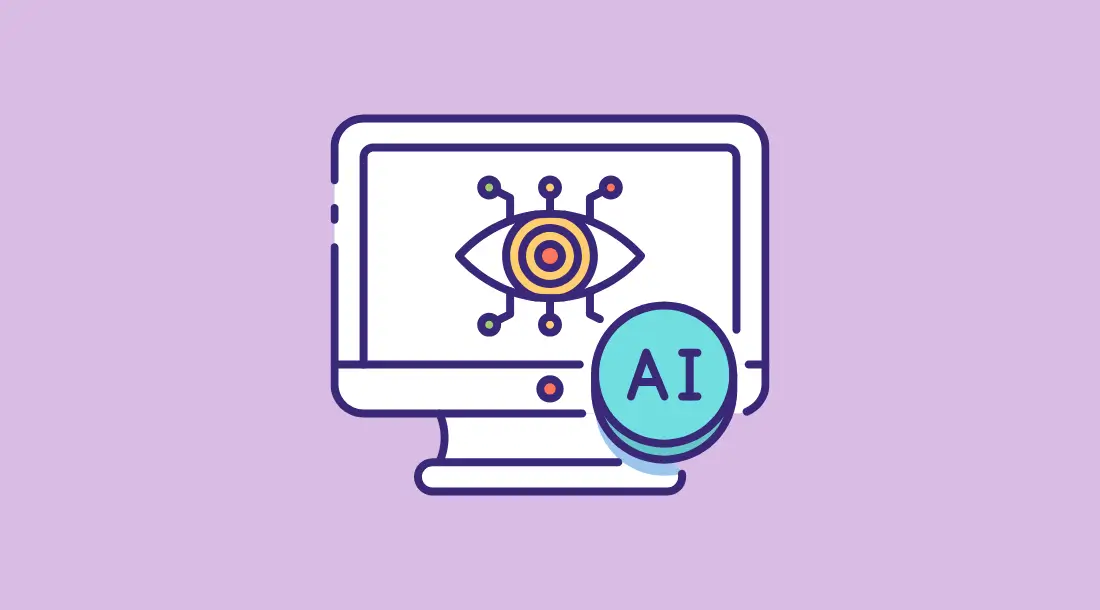
Visual content creation also benefits from computer vision. AI can assist in designing marketing visuals, auto-tagging assets for easy retrieval, and ensuring that branding guidelines are consistently applied across digital materials. In brand monitoring, AI-driven visual recognition systems help identify where and how a company’s logo appears online, protecting brand reputation and uncovering opportunities for influencer collaboration. Thus, computer vision expands the scope of AI for B2B marketing from text and numbers into the powerful realm of imagery and visual engagement.
Generative AI
Generative AI is perhaps the most transformative advancement within AI for B2B marketing. By using deep learning models to create new text, images, or videos, generative AI allows marketers to produce highly personalized and scalable content at an unprecedented pace. It can generate product descriptions, video scripts, or even campaign visuals tailored to specific audiences.
Generative AI enhances outreach efforts by helping marketers craft targeted messages that resonate with each stage of the buyer’s journey. For example, it can create customized email sequences for decision-makers, personalized landing page headlines, or social media content that adapts to audience engagement patterns. Beyond creativity, generative AI supports predictive modeling by simulating different campaign outcomes, enabling marketers to test scenarios before deployment.
How AI Integrates with the B2B Martech Stack
The true potential of AI for B2B marketing is realized when it seamlessly integrates into a company’s existing Martech stack. Instead of functioning as standalone tools, AI technologies connect with core marketing and business systems to streamline workflows, unify data, and create adaptive marketing ecosystems. These integrations enable marketers to gain a holistic view of customers, enhance collaboration across departments, and make data-driven decisions that translate directly into business growth.
CRM and Marketing Automation Platforms (MAP)
CRM and MAP form the backbone of most B2B marketing infrastructures. Integrating AI into these systems transforms them from static databases into intelligent growth engines. AI for B2B marketing enhances CRM capabilities by automating data entry, cleaning outdated records, and enriching profiles with external information such as company size, industry, and intent data. This creates a dynamic customer database that evolves in real time.
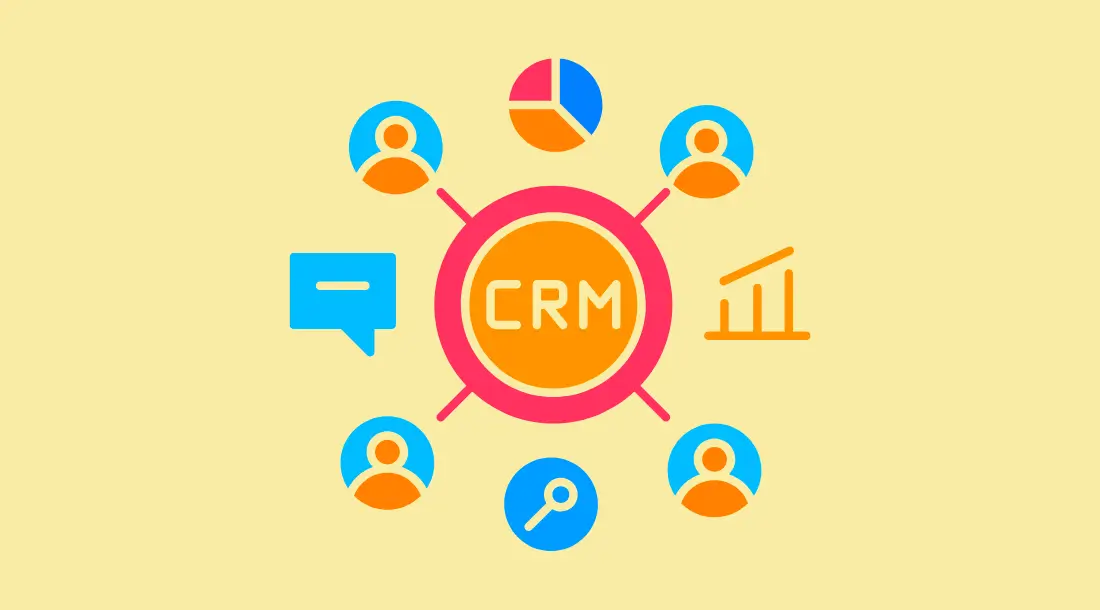
Marketing automation also becomes more adaptive when powered by AI. Instead of pre-set workflows, AI-driven automation tools adjust nurturing sequences based on behavioral data—such as email engagement, website activity, or purchase signals. For instance, if a prospect frequently engages with pricing pages, AI can automatically trigger personalized outreach from a sales representative. By integrating AI with CRMs and automation platforms like HubSpot, Salesforce, or Odoo, businesses achieve greater synchronization between marketing and sales efforts, ensuring that leads move efficiently through the funnel.
Data Lakes, CDPs, and Predictive Analytics Tools
Data lakes and Customer Data Platforms (CDPs) are essential for centralizing information from multiple sources. AI for B2B marketing thrives on data quality and volume, making these repositories crucial for success. By aggregating data from CRM systems, social media, web analytics, and third-party providers, AI tools can identify cross-channel patterns and hidden correlations that human analysts might overlook.
Predictive analytics tools then use this data to forecast outcomes—such as lead conversion probability, customer lifetime value, and campaign ROI. These insights empower marketers to allocate budgets more effectively and fine-tune strategies before execution. Furthermore, with AI integration, CDPs can perform real-time segmentation and recommendation, ensuring that every piece of content or campaign element aligns with a customer’s intent and journey stage. In this way, data lakes and predictive analytics serve as the analytical core of AI for B2B marketing, turning scattered information into strategic intelligence.
Integrations with ERP and Sales Enablement Systems
For complete alignment across the organization, AI for B2B marketing must extend beyond marketing and connect with ERP and sales enablement platforms. ERP integrations allow AI systems to analyze operational and financial data, offering marketers a clearer view of product availability, pricing fluctuations, and logistical constraints. This information enables campaigns to be not only personalized but also practical and timely.

Sales enablement systems also benefit from AI-driven insights. By analyzing previous interactions, proposal success rates, and negotiation outcomes, AI can provide sales teams with real-time recommendations for the next best action. Whether it’s suggesting relevant case studies, generating follow-up emails, or identifying cross-selling opportunities, AI ensures every sales touchpoint is supported by data-backed intelligence.
When integrated effectively, AI for B2B marketing transforms the Martech stack into a living ecosystem—continuously learning, adapting, and optimizing. Instead of separate tools operating in silos, organizations gain a unified platform that aligns marketing, sales, and operations around shared data and intelligent automation. This integration marks a defining step toward building future-ready enterprises that use AI not just to analyze performance, but to actively shape it.
AI for Market Research and Customer Insights
By integrating AI into market intelligence processes, organizations can move beyond descriptive analytics (what happened) to predictive and prescriptive insights (what will happen and what should be done). AI for B2B marketing enables marketers to uncover hidden correlations, detect early indicators of demand shifts, and personalize engagement strategies based on data-backed insights. This level of precision and foresight gives businesses a competitive advantage in both strategy and execution.
Predictive and Prescriptive Market Intelligence
AI for B2B marketing has transformed traditional market intelligence into a proactive and continuous process. Instead of simply analyzing historical data, predictive and prescriptive models powered by AI can forecast future trends, evaluate potential outcomes, and recommend optimal actions. This evolution allows businesses to make smarter decisions that are not just reactive but strategically forward-looking.
AI plays a crucial role in identifying emerging market trends by analyzing patterns across search data, industry publications, online forums, and social conversations. For example, machine learning models can detect sudden spikes in keyword searches related to a new technology or regulatory change, signaling an upcoming shift in industry priorities. This capability enables marketing teams to adjust their strategies early, positioning their brand as a thought leader in areas that are gaining traction.

Competitor monitoring is another critical function of AI for B2B marketing. Advanced algorithms continuously track competitors’ digital footprints—such as product launches, pricing updates, customer reviews, and ad campaigns—offering insights into their market behavior. AI tools aggregate this information to highlight competitive opportunities and threats, empowering businesses to identify gaps in the market or potential niches for expansion. Instead of relying on periodic reports, companies gain real-time situational awareness that informs decision-making across departments.
Forecasting customer demand using machine learning algorithms is one of the most practical applications of AI for B2B marketing. By analyzing past purchasing behaviors, economic indicators, and seasonal variations, AI models can predict fluctuations in demand with remarkable accuracy. These forecasts help optimize resource allocation, production planning, and marketing budgets. For example, if AI detects that a certain product category is trending upward within a specific region, marketers can proactively adjust their messaging and increase visibility in that segment.
In summary, predictive and prescriptive intelligence transforms market research from a static process into a living system that evolves with the market itself. Through AI for B2B marketing, businesses can anticipate change, respond with agility, and make data-driven decisions that maximize both short-term performance and long-term growth.
Understanding B2B Buyer Intent Through AI
Understanding buyer intent has always been one of the most complex aspects of B2B marketing due to the multi-layered decision-making process. AI for B2B marketing simplifies this challenge by leveraging data science to analyze intent signals—behaviors that indicate a potential buyer’s readiness to engage or purchase. By consolidating data from search behavior, social media activity, website interactions, and content engagement, AI provides marketers with a clear picture of where each prospect stands in the buying journey.
Intent data analysis is the foundation of this capability. AI systems monitor millions of digital touchpoints, detecting patterns such as repeated visits to solution-specific pages, downloads of product documentation, or engagement with certain keywords. When analyzed collectively, these signals reveal whether an account is in the research, consideration, or decision stage. AI for B2B marketing then helps prioritize outreach based on intent strength, ensuring that marketing and sales teams focus their efforts on the most promising leads.
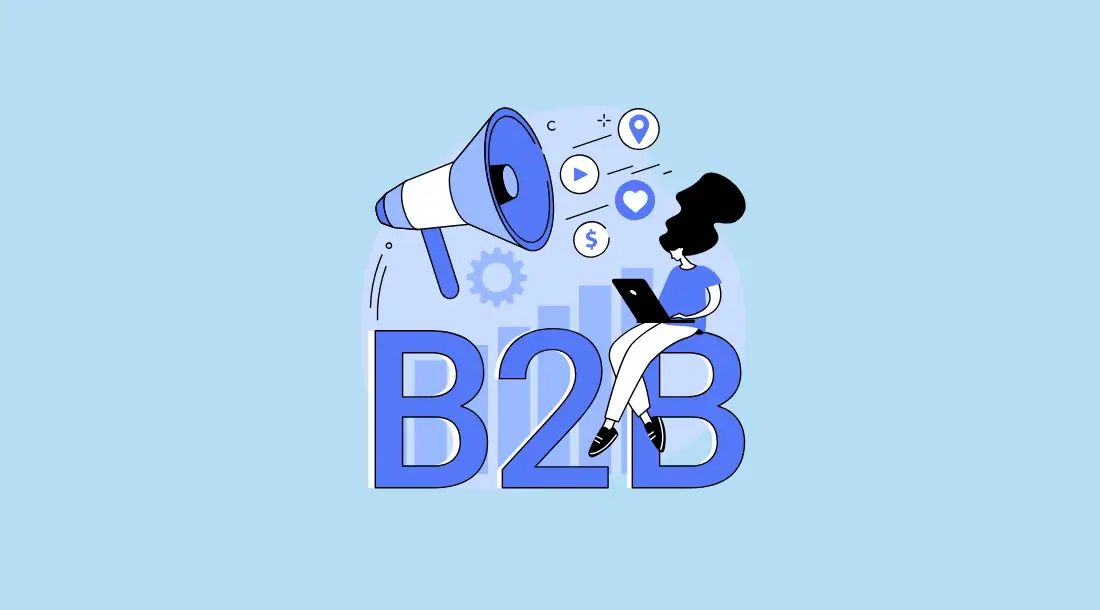
AI also excels at identifying decision-makers and buying committees within target organizations. In B2B environments, purchases often involve multiple stakeholders, each with different priorities and influence levels. AI analyzes professional networks, company structures, and digital interactions to map out these committees, providing visibility into who holds decision power and who acts as a key influencer. This intelligence allows marketers to tailor communication strategies to each persona, ensuring messages are relevant and persuasive.
Another key advantage of AI for B2B marketing is its ability to segment accounts by readiness-to-buy. By combining behavioral, demographic, and firmographic data, AI assigns engagement scores to each account, classifying them as cold, warm, or hot leads. This segmentation enables more efficient pipeline management, helping sales teams allocate their time and resources strategically.
- Intent Signal Tracking: AI continuously captures behavioral cues from search, social, and web data to measure a buyer’s level of interest and engagement.
- Buyer Committee Identification: Machine learning maps organizational structures to identify key decision-makers and influencers.
- Readiness Scoring: Predictive algorithms rank accounts based on intent intensity and conversion probability.
- Actionable Insights: AI translates complex data into clear recommendations for next steps in outreach and nurturing.
These functions collectively enable AI for B2B marketing to go beyond surface-level analytics and uncover the true motivations driving each potential customer. By understanding not just what prospects do, but why they do it, marketers can build deeper, more meaningful relationships and deliver personalized experiences that drive conversion.
AI-Driven Account Segmentation and Persona Building
Segmentation and persona building form the backbone of any successful B2B marketing strategy. However, static segmentation models based on outdated or limited data are no longer sufficient in today’s fast-changing market. AI for B2B marketing introduces a dynamic and adaptive approach, enabling marketers to categorize accounts and build personas that evolve with real-time behaviors and insights.
Dynamic segmentation leverages both behavioral and firmographic data to group customers by their level of engagement, industry, company size, or potential value. Unlike traditional segmentation methods that rely on predefined parameters, AI-driven segmentation updates continuously as new data flows in. For example, if a company’s purchasing frequency or online engagement changes, the AI system automatically reclassifies it into a different segment. This ensures that marketing campaigns remain relevant and targeted, improving conversion rates and reducing wasted effort.
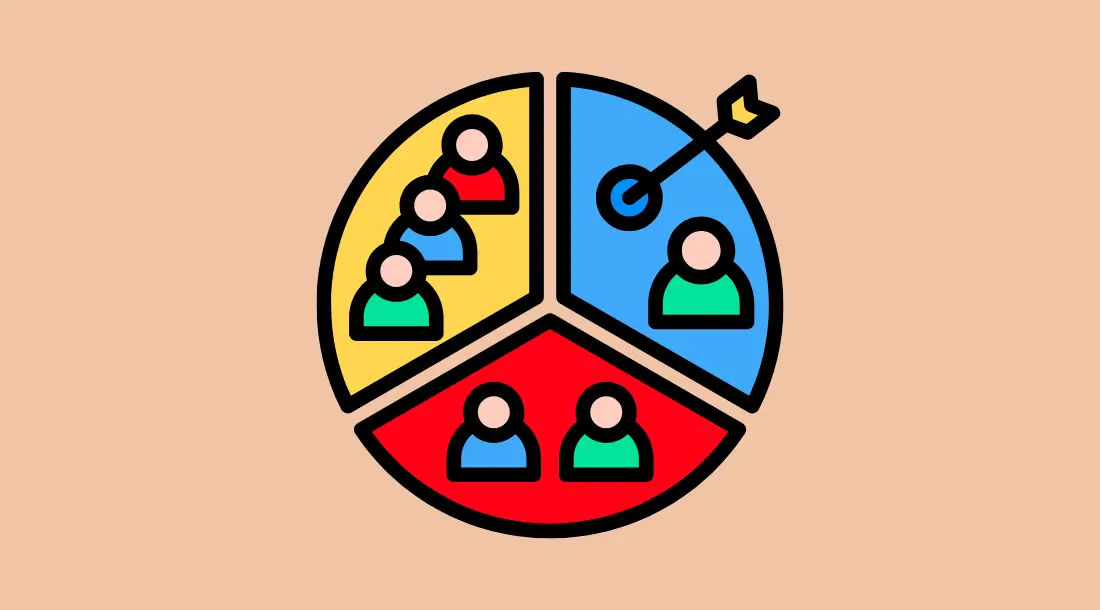
Building data-enriched buyer personas with NLP and machine learning adds another layer of sophistication. AI analyzes content consumption patterns, communication tone, and social media activity to infer psychographic traits such as pain points, motivations, and preferences. This helps marketers create more realistic and actionable personas that reflect not just who buyers are, but what drives their decisions. With AI for B2B marketing, these personas can even be customized by role—for instance, distinguishing between technical decision-makers, financial approvers, and end-users.
Real-time updates for account-based insights further enhance the value of AI-driven segmentation. AI continuously integrates new data from CRM systems, marketing automation platforms, and external databases, ensuring that every account profile reflects the latest developments. This constant refresh cycle allows marketers to detect changes in account engagement, budget allocation, or strategic focus and respond accordingly.
The process of AI-driven segmentation and persona development typically involves several interconnected stages:
- Data Aggregation: Collecting information from CRM, website analytics, email engagement, and third-party sources.
- Behavioral Modeling: Using AI algorithms to identify recurring patterns in customer interactions.
- Persona Development: Applying NLP and ML to define distinct buyer personas with predictive accuracy.
- Continuous Optimization: Automatically refining segments and personas as new behavioral data emerges.
Through this process, AI for B2B marketing enables organizations to deliver hyper-personalized experiences that resonate with each account’s unique context. Instead of treating customers as static profiles, AI transforms them into dynamic entities with evolving needs and opportunities.
Ultimately, AI-driven segmentation and persona building empower businesses to bridge the gap between data and empathy. By combining quantitative precision with qualitative understanding, AI for B2B marketing helps organizations craft strategies that are not only data-informed but human-centered—an essential balance in the modern era of intelligent marketing.
AI in B2B Content Marketing
In the digital age, content is the cornerstone of every successful marketing strategy, and this is especially true in the B2B landscape where purchase decisions are complex, research-driven, and relationship-based. However, as competition intensifies and audience expectations evolve, traditional content marketing approaches struggle to deliver personalized, data-backed, and timely messaging. This is where AI for B2B marketing steps in, reshaping how businesses plan, produce, and distribute content. By leveraging AI technologies, B2B marketers can gain deep insights into what their audiences want, generate optimized content faster, and deliver highly personalized experiences across all touchpoints.
AI for B2B marketing in content strategy is not just about automation—it’s about intelligence. It empowers marketers to understand engagement metrics, anticipate buyer needs, and adjust strategies dynamically. From content ideation and SEO optimization to personalized delivery, AI enables companies to transform content marketing from a static process into a continuously learning ecosystem that adapts in real time.
Content Ideation and Planning
One of the most time-consuming challenges in B2B marketing is identifying what kind of content will resonate with different audience segments and drive measurable results. AI for B2B marketing simplifies this process by using advanced analytics and generative technologies to uncover content opportunities, build strategic roadmaps, and streamline creative workflows.
AI analyzes performance data from multiple sources—such as website analytics, CRM insights, and social engagement metrics—to recommend new content topics. These insights go beyond surface-level keyword trends; they identify gaps in content coverage, reveal underexplored themes, and predict which topics will perform best based on historical engagement. For example, if AI detects that audiences consistently engage with whitepapers about automation in supply chain management, it can suggest expanding that theme into new content types such as video explainers, case studies, or interactive guides.

Generative AI tools further enhance ideation by automating the creation of blog outlines, draft copies, and even visual assets. Marketers can input a target keyword, audience profile, or tone of voice, and AI will generate well-structured outlines complete with subtopics, headings, and SEO-friendly phrasing. Beyond text, AI can also create supporting visuals—infographics, illustrations, or short-form videos—ensuring consistency across multimedia campaigns. This not only accelerates production but also maintains brand coherence across different content formats.
Equally important is aligning content with buyer intent and funnel stage. AI for B2B marketing categorizes content opportunities based on where prospects are in the decision-making process—awareness, consideration, or conversion. For instance, during the awareness stage, AI might suggest educational blog posts that highlight industry trends. In the consideration phase, it could recommend comparison guides or product demos, while for the conversion stage, it focuses on case studies and ROI-driven content. This ensures every piece of content serves a specific strategic purpose.
To summarize, AI-driven content ideation and planning empower marketers to:
- Identify emerging content opportunities through continuous performance data analysis.
- Generate drafts and outlines using generative AI tools that save time and preserve brand tone.
- Align topics strategically with buyer intent and funnel stage for maximum engagement.
With AI for B2B marketing, ideation and planning are no longer guesswork—they become measurable, predictive, and purpose-driven. By turning insights into strategy and automation into creativity, businesses can continuously deliver content that captivates, converts, and compounds in value over time.
AI-Powered SEO and Topic Clustering
Search engine optimization has always been a fundamental aspect of content marketing, but traditional SEO methods rely heavily on manual research and trial-and-error optimization. AI for B2B marketing revolutionizes SEO by providing data-backed intelligence that helps marketers uncover keyword opportunities, cluster related topics, and optimize content for both users and search engines simultaneously.
Keyword discovery is one of the most valuable applications of AI in SEO. Tools like MarketMuse, Clearscope, and Surfer use machine learning models to analyze search intent, competition level, and content relevance. Instead of manually guessing which keywords will perform well, AI identifies the most strategic combinations of short-tail and long-tail keywords that align with a company’s audience and business goals. Moreover, AI continuously monitors changes in search patterns, allowing B2B marketers to stay ahead of algorithm updates and shifting user behavior.
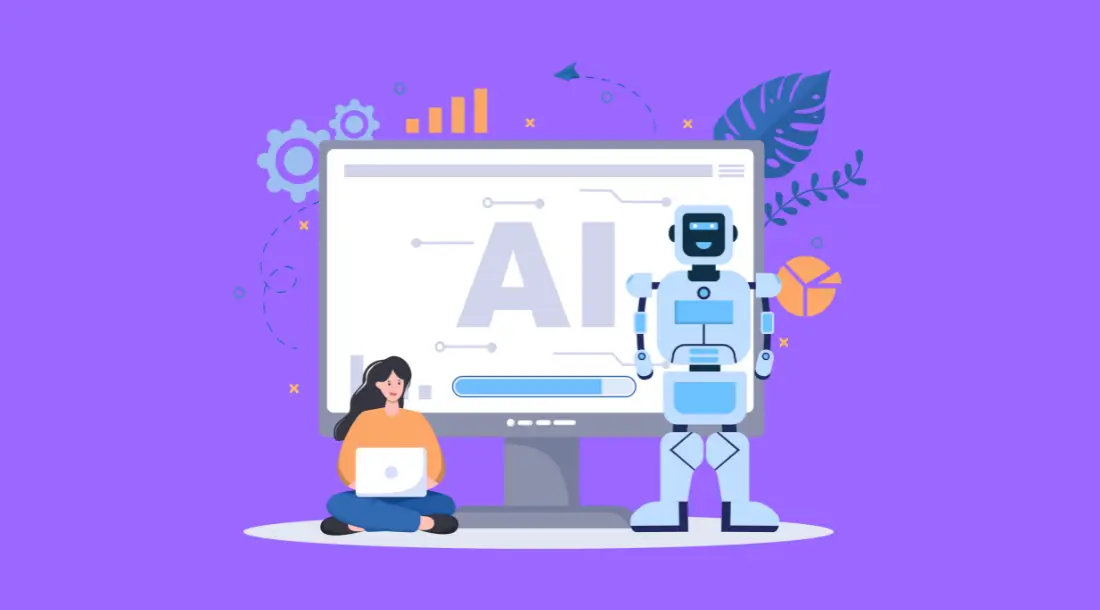
Content optimization is another critical advantage of AI for B2B marketing. Through natural language processing, AI evaluates how well existing content aligns with semantic search intent—ensuring that pages are not only keyword-rich but also contextually relevant. These NLP-driven systems assess readability, structure, tone, and keyword distribution, providing actionable recommendations for improvement. As a result, marketers can refine their articles to meet both SEO standards and user expectations, increasing organic visibility and engagement.
Automating internal linking and meta optimization further strengthens SEO performance. AI tools can map out the relationships between different content pieces, automatically suggesting internal links that improve website architecture and user navigation. They can also generate optimized meta titles and descriptions based on real-time search data, ensuring that every piece of content is properly indexed and ranked.
The collective impact of AI-powered SEO and topic clustering can be summarized through the following functions:
- Keyword Discovery: AI identifies profitable keywords and emerging search terms based on relevance, competition, and user intent.
- Semantic Optimization: NLP algorithms refine content to meet the evolving standards of semantic search engines.
- Automated Linking: AI suggests internal link structures that improve user experience and ranking signals.
- Meta Enhancement: Automated meta descriptions and titles boost click-through rates and consistency.
AI for B2B marketing elevates SEO from a technical task to a strategic, data-driven discipline. By merging creativity with computational intelligence, AI ensures that every piece of content is discoverable, relevant, and optimized for conversion—ultimately helping businesses dominate search results while delivering meaningful value to their audiences.
Personalizing Content at Scale
Personalization is the defining frontier of modern B2B marketing. Unlike B2C environments, where personalization often targets individual consumers, B2B interactions involve multiple stakeholders across different departments and hierarchies. Achieving meaningful personalization at this scale has traditionally been a challenge—but AI for B2B marketing makes it not only possible but efficient and precise.
Dynamic content delivery lies at the core of AI-driven personalization. By leveraging firmographic data such as company size, industry, and revenue, AI systems can automatically tailor web pages, landing pages, and blog recommendations to match the visitor’s business profile. For example, a visitor from a healthcare enterprise might see content about compliance and patient data security, while someone from a manufacturing company encounters insights about automation and logistics optimization. This ensures that every touchpoint delivers relevant and contextual value.

AI recommendation systems take personalization even further by adapting website experiences in real time. These systems analyze a visitor’s behavior—such as the pages viewed, downloads made, and time spent on specific sections—and dynamically adjust on-site elements like calls-to-action, resource suggestions, or chatbot prompts. AI for B2B marketing thus transforms websites into living platforms that evolve with every interaction, ensuring a continuous feedback loop between data collection and user experience.
Email and ad personalization powered by predictive analytics is another major advantage. Instead of generic campaigns, AI segments recipients based on engagement history, purchase intent, and behavioral signals, delivering messages that speak directly to their current interests. Predictive models can even determine the best send times, content formats, and frequency of communication for each contact. For instance, a lead that has engaged heavily with whitepapers may receive an invitation to a product demo, while a new prospect is sent educational resources to build awareness.
The personalization process enabled by AI for B2B marketing typically includes:
- Data Integration: Combining CRM, behavioral, and firmographic data into unified customer profiles.
- Real-Time Adaptation: Delivering dynamically personalized experiences across websites and digital touchpoints.
- Predictive Campaigning: Using AI to forecast engagement behavior and optimize timing and messaging.
- Scalable Automation: Extending personalization capabilities to thousands of accounts simultaneously without sacrificing quality.
AI for B2B marketing eliminates the long-standing trade-off between personalization and scalability. It empowers marketers to maintain a human touch while managing vast datasets and complex buyer journeys. Every interaction—whether a website visit, email click, or ad impression—becomes an opportunity to strengthen relationships through relevant, data-informed communication.
In the end, AI-driven content personalization is not just about improving engagement metrics; it’s about building trust. By consistently delivering the right message to the right person at the right time, AI for B2B marketing transforms content strategy into an engine for long-term customer loyalty and sustainable growth.
AI for Lead Generation and Scoring
In the modern B2B landscape, lead generation and scoring have evolved from manual, intuition-based processes into highly intelligent, automated systems. The traditional methods of collecting contacts, qualifying prospects, and prioritizing outreach are no longer sufficient in a world where data flows constantly and buyer behavior changes by the minute. This is where AI for B2B marketing plays a transformative role, bringing precision, scalability, and predictability to every stage of the lead management process.
AI for B2B marketing enables businesses to identify high-potential prospects faster, understand their intent more accurately, and nurture them through personalized engagement strategies. Through predictive analytics, machine learning, and automation, companies can eliminate inefficiencies, reduce human bias, and focus on accounts that are most likely to convert. The integration of AI into lead generation and scoring does not replace human marketers; instead, it amplifies their effectiveness by providing deep insights and actionable intelligence.
Smart Prospecting with AI
Smart prospecting is one of the most impactful applications of AI for B2B marketing. In a traditional setup, sales and marketing teams often rely on static lists, manual searches, or broad targeting criteria to find potential leads. However, these approaches are time-consuming and prone to inaccuracies. AI revolutionizes prospecting by combining data-driven intelligence with predictive algorithms to identify, qualify, and engage prospects at scale.
Predictive account targeting is a core function of AI-based prospecting. By analyzing intent data—such as search queries, website visits, social media interactions, and content consumption patterns—AI identifies accounts showing signs of active interest in specific products or services. For example, if multiple employees from a target company are researching “supply chain optimization software,” AI can flag that organization as a high-priority lead for outreach. This allows marketers to focus on prospects who are already signaling readiness to engage, rather than wasting time on cold leads.
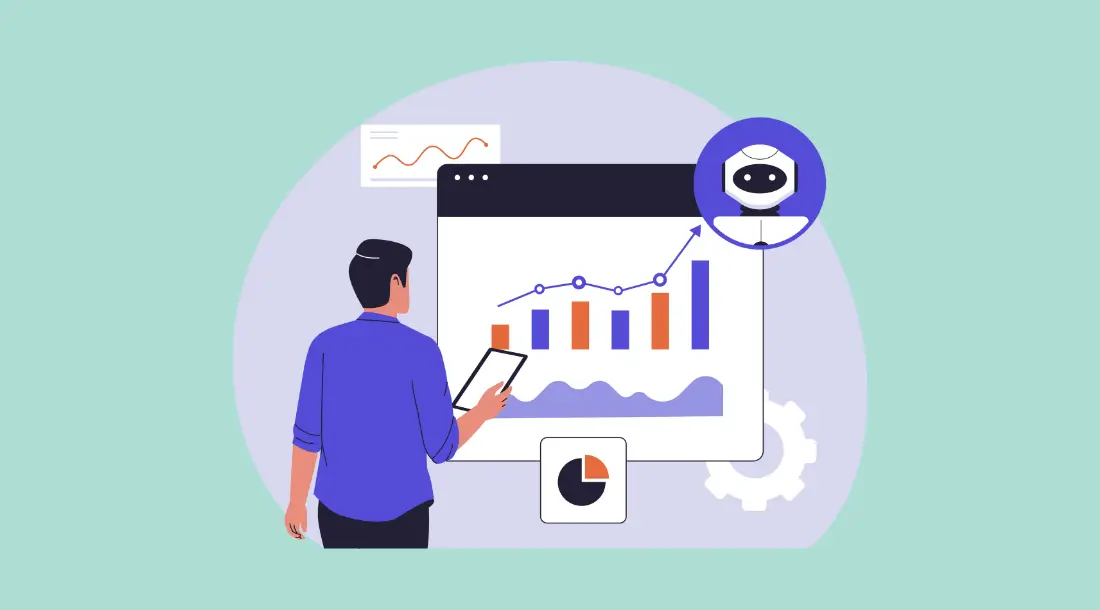
Lead discovery through AI-based LinkedIn and CRM enrichment further enhances targeting precision. AI systems can automatically pull data from professional networks, company websites, and databases to create comprehensive lead profiles. These profiles include firmographic details (such as company size, industry, and revenue), technographic data (tools and platforms the company uses), and behavioral insights (topics of interest, recent posts, or job changes). This data enrichment process ensures that every lead is well-defined, giving marketers a 360-degree view before initiating contact.
AI also plays a critical role in maintaining data hygiene through automated deduplication. In many B2B organizations, customer databases are cluttered with outdated, incomplete, or duplicated entries, leading to wasted effort and inaccurate reporting. AI algorithms can detect and merge duplicate records, validate email addresses, and standardize information formats. The result is a clean, unified database that supports more effective segmentation and campaign execution.
Key benefits of smart prospecting with AI for B2B marketing include:
- Enhanced Lead Precision: AI identifies leads based on real intent signals, not static demographic assumptions.
- Time Efficiency: Automated enrichment and validation reduce manual workload for sales teams.
- Data Accuracy: AI-driven deduplication and updates ensure database integrity over time.
- Scalable Outreach: Predictive models allow teams to scale prospecting efforts without compromising quality.
Through smart prospecting, AI for B2B marketing transforms lead generation from a guessing game into a science-driven discipline. Marketers no longer need to chase cold leads blindly—instead, they can focus their efforts on the accounts most likely to deliver long-term value.
Predictive Lead Scoring
Once leads have been identified, the next challenge lies in prioritizing them effectively. Traditional lead scoring systems rely on fixed rules—such as assigning points for website visits, email opens, or job titles. While functional, these static models often fail to adapt to complex buying behaviors or changing market conditions. Predictive lead scoring powered by AI for B2B marketing overcomes these limitations by using machine learning algorithms that analyze thousands of variables to determine a lead’s likelihood of conversion.
AI-driven scoring models incorporate a wide range of data points, including engagement metrics, demographics, firmographics, and pipeline velocity. Engagement-based data captures how prospects interact with marketing materials—such as downloading whitepapers, attending webinars, or revisiting product pages. Demographic and firmographic data define who the lead is, including their role, company size, and industry relevance. Pipeline velocity measures how quickly similar leads have moved through the sales funnel in the past. By analyzing this data collectively, AI assigns each lead a dynamic score that updates in real time as new information becomes available.

Continuous improvement is another critical advantage of predictive lead scoring. Unlike static systems that require manual recalibration, AI for B2B marketing continuously refines its models through feedback loops. As sales teams close deals and record outcomes, the system learns which leads converted successfully and which did not. This historical feedback allows AI to adjust weighting factors automatically, improving prediction accuracy over time. Essentially, the more data the system processes, the smarter it becomes.
When comparing AI lead scoring to traditional rules-based systems, the differences are significant:
- Data Breadth: AI models consider hundreds or thousands of variables, while traditional models rely on a limited set of manual rules.
- Adaptability: AI scoring evolves with real-time data, while static models quickly become outdated.
- Accuracy: Predictive algorithms achieve higher precision in identifying high-intent leads.
- Scalability: AI can process vast volumes of data across multiple channels simultaneously.
Moreover, predictive lead scoring enhances collaboration between marketing and sales teams. By providing transparent scoring criteria and clear conversion probabilities, AI aligns both departments around a unified definition of lead quality. This reduces friction, accelerates handoffs, and ensures that resources are focused on the prospects most likely to yield results.
In essence, predictive lead scoring exemplifies the value of AI for B2B marketing—turning data complexity into actionable clarity and enabling organizations to work smarter, not harder, in their pursuit of qualified leads.
Conversion Optimization with AI
Generating and scoring leads are only part of the equation; converting those leads into paying customers is the ultimate goal. Conversion optimization has traditionally relied on A/B testing, manual analysis, and intuition. However, with AI for B2B marketing, the process becomes far more sophisticated, data-driven, and continuous. AI empowers marketers to optimize every stage of the conversion funnel—from website interactions to post-click engagement—by personalizing experiences and predicting what actions will lead to success.
Dynamic A/B testing is one of the most significant advancements AI brings to conversion optimization. Instead of testing one variable at a time and waiting for results, AI algorithms can simultaneously evaluate multiple variations of headlines, visuals, CTAs, and layouts. The system identifies which combination performs best for specific audience segments and automatically adjusts campaigns in real time. This adaptive approach ensures that content, landing pages, and ads evolve continuously based on live data rather than static test results.

AI-driven landing pages represent another leap forward. Using behavioral analytics, AI can dynamically modify page elements—such as testimonials, form fields, or product images—based on a visitor’s profile and engagement history. For example, a returning visitor from the finance industry might see industry-relevant case studies, while a new lead from manufacturing is shown supply chain optimization success stories. This level of personalization enhances user relevance, increasing both dwell time and conversion rates.
Smart forms and chatbots powered by AI also play a critical role in qualifying leads efficiently. These systems engage visitors in real time, asking targeted questions to determine their needs, budget, and timeline. AI chatbots can recognize intent, respond contextually, and even schedule follow-up meetings with sales representatives. This automated interaction shortens response times and ensures no lead falls through the cracks.
Finally, AI provides actionable recommendations for the next best action—a powerful feature that helps guide both marketers and sales teams. By analyzing past conversions and behavioral data, AI suggests optimal follow-up strategies, such as sending a personalized email, scheduling a demo, or retargeting the lead with a specific ad. This predictive guidance ensures that every engagement is timely, relevant, and based on proven success patterns.
The core benefits of conversion optimization through AI for B2B marketing can be summarized as follows:
- Adaptive A/B Testing: Real-time experimentation and adjustments increase conversion precision.
- Personalized Landing Pages: Dynamic content tailored to user profiles boosts engagement and trust.
- Automated Qualification: Smart chatbots and forms accelerate lead nurturing and reduce manual effort.
- Predictive Follow-Up: AI-driven recommendations ensure timely, effective sales actions.
By combining data analytics, automation, and personalization, AI for B2B marketing transforms conversion optimization from a linear process into an intelligent, evolving system. Businesses no longer rely solely on intuition—they can act on insights that are precise, contextual, and predictive. The result is not just higher conversion rates but a more efficient, scalable marketing engine that continuously learns and improves with every interaction.
AI in B2B Advertising and Media Buying
In today’s fast-paced digital economy, B2B marketing success depends on precision targeting, optimized media spending, and measurable impact. However, traditional advertising approaches—characterized by manual bidding, fragmented audience data, and delayed reporting—struggle to keep pace with dynamic buyer behavior and rapid market changes. AI for B2B marketing has completely transformed this landscape. By leveraging machine learning, predictive analytics, and automation, businesses can now execute smarter, faster, and more cost-efficient advertising strategies.
AI for B2B marketing enables organizations to eliminate guesswork in ad placements, refine audience targeting, and maximize return on every dollar spent. From programmatic advertising to AI-powered campaigns on platforms like LinkedIn and Google Ads, artificial intelligence turns advertising into an intelligent ecosystem that continuously learns and adapts. The result is not just better visibility—but meaningful engagement that converts prospects into long-term business relationships.
AI-Driven Programmatic Advertising
Programmatic advertising marks one of the most significant breakthroughs in AI for B2B marketing. It uses automated systems powered by AI and machine learning to buy, place, and optimize ads in real time. This removes the inefficiencies of traditional media buying, where marketers manually negotiated placements and relied on historical data to make decisions. With AI-driven automation, ad spending becomes more strategic, responsive, and scalable.
AI automates ad placements and budget allocation across channels and devices. Instead of setting static budgets or guessing which sites will yield the best performance, AI systems continuously analyze campaign data and allocate resources where engagement is highest. This intelligent distribution ensures maximum visibility among the most relevant B2B audiences. For example, if a campaign targeting manufacturing executives performs better on industry-specific blogs than on generic business networks, AI will automatically shift the budget toward that segment.

Real-time bidding optimization is another core advantage of AI for B2B marketing. Through machine learning algorithms, AI analyzes thousands of data points—including user behavior, demographics, time of day, and device type—to determine the value of each ad impression. It then adjusts bids dynamically to ensure that every ad purchase aligns with conversion goals and ROI targets. This micro-level precision helps businesses reduce wasted ad spend while increasing the likelihood of reaching decision-makers at the right moment.
Predictive audience targeting further enhances programmatic advertising by identifying the most promising prospects before they even engage. AI examines patterns in user behavior, search history, and engagement data to predict which companies or individuals are likely to enter the buying cycle soon. This allows marketers to proactively deliver ads that align with potential customer intent, rather than waiting for them to make the first move.
Through AI for B2B marketing, programmatic advertising transforms digital campaigns from static investments into self-optimizing ecosystems. Marketers can focus on creative strategy and customer relationships while AI ensures that every impression, click, and dollar contributes to measurable business growth.
AI-Enhanced LinkedIn and Google Ads Campaigns
For B2B marketers, platforms like LinkedIn and Google Ads are critical channels for reaching decision-makers, generating leads, and driving conversions. Yet, managing and optimizing campaigns across these complex ecosystems can be overwhelming. AI for B2B marketing provides a powerful solution by enhancing targeting accuracy, optimizing creative assets, and predicting performance outcomes.
Predictive click-through and conversion models are at the core of this advancement. AI algorithms analyze vast amounts of campaign data—click rates, dwell time, keyword relevance, and demographic performance—to forecast which combinations of audience segments and creatives will yield the best results. For example, AI might identify that ads targeting IT directors in mid-sized companies have a higher likelihood of conversion when featuring solution-oriented language rather than technical jargon. This foresight allows marketers to refine campaigns before wasting budget on underperforming segments.
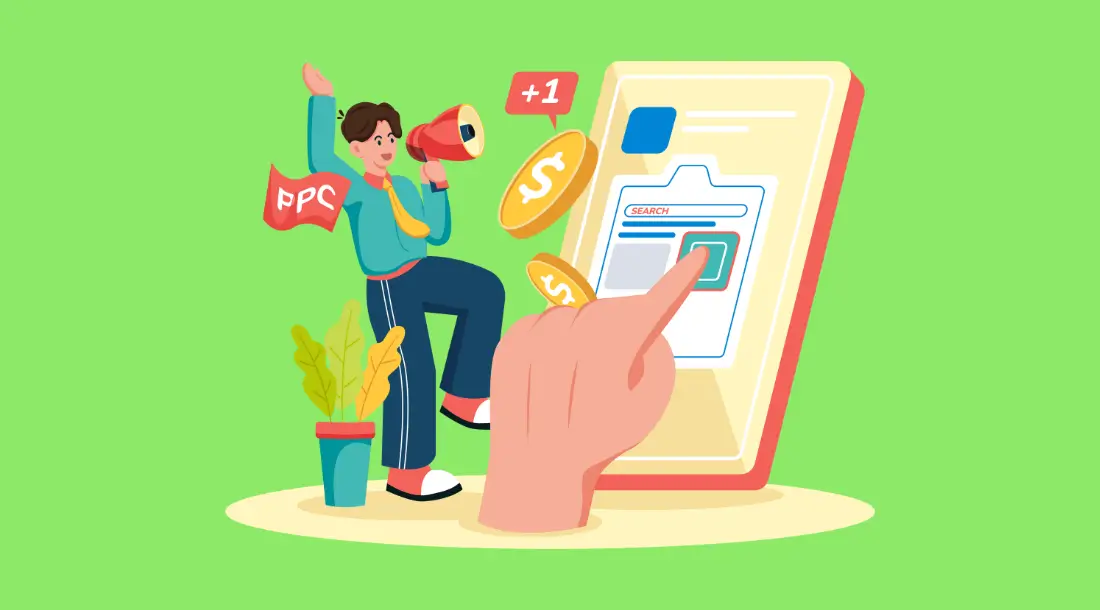
AI also enables the creation of smart creatives and dynamic ad copy. Using natural language processing and generative AI technologies, marketers can automatically generate variations of ad text, headlines, and calls-to-action that align with different audience personas and campaign goals. These creative iterations are continuously tested and optimized based on real-time engagement metrics. For display and video ads, AI can also generate or select visuals that resonate with specific industries or buying roles. This ensures every ad feels personalized and relevant without requiring constant manual edits.
Lookalike audience creation powered by AI insights further expands reach while maintaining precision. By analyzing behavioral patterns of existing high-value customers, AI can identify new prospects who share similar traits or purchasing behaviors. On LinkedIn, for instance, AI might discover companies with comparable hiring trends, technology stacks, or engagement with related content. On Google Ads, it can detect users with matching search intent patterns. This capability allows B2B marketers to extend their audience pool intelligently, increasing lead volume without sacrificing relevance.
By integrating AI for B2B marketing into LinkedIn and Google Ads strategies, companies can transform their advertising from reactive to proactive. Campaigns become living systems—constantly learning, adjusting, and scaling to meet both short-term goals and long-term growth targets.
Attribution and ROI Optimization
One of the most complex challenges in B2B marketing is accurately attributing results across multiple touchpoints. Decision-making in B2B sales often involves several interactions—email campaigns, webinars, social ads, direct messages, and more—before a lead converts. Traditional attribution models like first-click or last-click fail to capture the true customer journey, leading to skewed ROI assessments. AI for B2B marketing addresses this problem by introducing multi-touch attribution modeling, predictive analytics, and real-time optimization dashboards that provide a holistic view of marketing performance.
Multi-touch attribution modeling with AI distributes credit across every relevant touchpoint in the buyer’s journey. Using machine learning, AI analyzes historical conversion data and determines how different channels—such as paid ads, organic search, or social engagement—contribute to pipeline progression. Unlike static models, AI adapts continuously, adjusting weightings as it learns which interactions have the greatest impact. This enables marketers to understand not just where conversions happen, but how prospects move between channels before reaching a purchase decision.
Understanding pipeline contribution by channel is another crucial capability of AI for B2B marketing. AI systems connect marketing data with CRM and sales platforms to trace the full lifecycle of a lead—from the first ad impression to closed revenue. This integration allows marketers to see which campaigns drive the most pipeline value, not just the highest click-through rates. For instance, an ad campaign that generates fewer clicks but consistently leads to large deal closures might be more valuable than one with high engagement but low conversion potential.
AI-driven real-time optimization dashboards bring these insights together in an actionable format. Instead of waiting for end-of-month reports, marketers can monitor performance as it unfolds. AI highlights underperforming ads, reallocates budgets, and suggests adjustments to creative or targeting parameters on the fly. It also generates predictive insights—forecasting future ROI based on ongoing trends and external factors like market seasonality or competitive activity.
Through attribution intelligence and ROI optimization, AI for B2B marketing turns fragmented analytics into a cohesive narrative of cause and effect. Marketers gain a clear understanding of what drives business results and can confidently allocate resources toward strategies that deliver measurable growth. In essence, AI doesn’t just track performance—it continuously improves it, enabling B2B organizations to move from reactive measurement to proactive profitability.
AI for Account-Based Marketing (ABM)
Account-Based Marketing (ABM) has become one of the most powerful strategies in B2B marketing, enabling businesses to focus their resources on high-value accounts with the greatest potential for long-term growth. However, traditional ABM approaches often struggle with data overload, fragmented communication, and the challenge of maintaining personalized engagement across multiple decision-makers. AI for B2B marketing addresses these challenges head-on by automating account selection, orchestrating targeted campaigns, and optimizing measurement with predictive intelligence.
Through AI for B2B marketing, organizations can move beyond manual segmentation and one-size-fits-all campaigns. Artificial intelligence transforms ABM into an adaptive, data-driven ecosystem—where every account is treated as a market of one, every action is informed by insights, and every message is optimized for conversion.
Intelligent Account Selection
The success of Account-Based Marketing begins with identifying which accounts deserve attention. In a conventional setup, marketers rely on human judgment or simple firmographic filters—such as company size, industry, or location—to prioritize targets. However, these methods often overlook hidden potential or emerging opportunities. With AI for B2B marketing, account selection becomes a scientific process driven by predictive analytics, behavioral insights, and data integration.
AI enables businesses to prioritize high-value accounts using intent and firmographic AI scoring. Instead of analyzing static attributes, AI systems assess dynamic intent signals—such as web activity, search queries, social media engagement, and content consumption. For example, if a company’s employees frequently search for “enterprise ERP integration” or engage with related thought leadership content, AI can flag that account as being in an active buying phase. Combining these behavioral signals with firmographic scoring ensures marketers focus on accounts that not only fit their ideal customer profile but also show real-time intent to purchase.
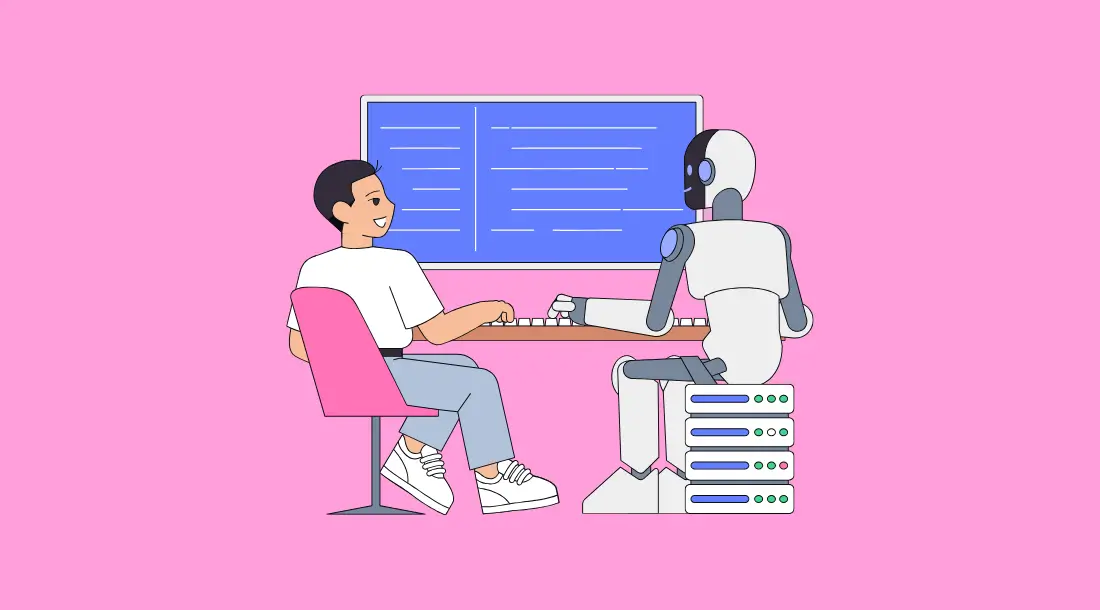
Predictive modeling plays a vital role in identifying deal expansion opportunities. AI for B2B marketing analyzes historical deal data, customer satisfaction scores, and usage metrics to uncover patterns indicating which existing clients are ready for upselling or cross-selling. For instance, an AI system might recognize that companies adopting one module of a SaaS product are statistically likely to purchase complementary solutions within six months. By surfacing these insights, AI helps sales teams allocate resources efficiently and maximize lifetime account value.
Integration with CRM and external data sources is crucial for holistic account visibility. AI systems pull information from multiple channels—including CRM records, marketing automation tools, website analytics, and third-party databases—to create unified account profiles. These enriched profiles provide a comprehensive view of each target’s buying stage, challenges, and opportunities. This integration ensures that marketing and sales teams have access to the same data, enabling more cohesive outreach and better alignment on priorities.
Through intelligent account selection, AI for B2B marketing transforms ABM from a reactive strategy into a proactive growth engine—ensuring that every dollar and every interaction contributes to meaningful, measurable outcomes.
Personalized ABM Campaigns with AI
Personalization is the cornerstone of successful Account-Based Marketing. However, personalizing at scale—across hundreds or thousands of accounts—has traditionally been difficult and resource-intensive. AI for B2B marketing overcomes this limitation by leveraging automation, natural language processing, and predictive modeling to create adaptive, relevant, and highly personalized campaigns for each target account.
Adaptive messaging across touchpoints allows marketers to deliver consistent yet individualized experiences throughout the buyer’s journey. AI analyzes interaction data, such as email opens, webinar attendance, or ad engagement, to determine which messages resonate most with each account. It then automatically adjusts tone, format, and content focus to match specific buyer needs. For instance, a procurement executive may receive ROI-focused messaging, while a technical director from the same company sees product specification details. This ensures every communication feels personalized and purposeful.

Custom content generation per account is another transformative capability. Generative AI tools can create tailored assets—such as case studies, landing pages, and product videos—designed specifically for individual accounts or industries. For example, AI can rewrite a case study to highlight metrics relevant to a specific vertical, or generate a landing page showcasing industry-specific use cases. This level of customization, once impossible at scale, is now achievable with minimal manual intervention.
Predictive email and ad delivery timing further optimize engagement. Instead of sending campaigns at fixed intervals, AI determines when each account or stakeholder is most likely to interact. Machine learning models analyze historical engagement data, time-zone behavior, and content preferences to schedule outreach at optimal times. This results in higher open rates, click-throughs, and conversion rates while minimizing message fatigue.
AI for B2B marketing redefines personalization by merging creativity with intelligence. Rather than sending uniform campaigns, marketers can deliver experiences that mirror one-to-one relationships at scale. The outcome is a significant increase in engagement, brand trust, and deal velocity—turning personalized ABM into a measurable growth strategy rather than a resource-heavy experiment.
AI-Powered Orchestration and Measurement
Once high-value accounts are selected and personalized campaigns are deployed, the next challenge lies in orchestrating and measuring their impact. Traditional ABM execution often suffers from fragmented workflows and disconnected reporting, making it difficult to align marketing and sales efforts. AI for B2B marketing solves this challenge by introducing intelligent workflow orchestration and advanced measurement capabilities that unify teams and optimize every stage of the pipeline.
AI-powered orchestration coordinates marketing and sales actions through workflow engines that automate communication triggers, task assignments, and campaign scheduling. For example, if a prospect engages with a whitepaper or webinar, AI can automatically notify the appropriate sales representative, suggest the next best action, and trigger a personalized follow-up email sequence. This level of coordination ensures that marketing and sales operate in perfect sync, reducing delays and enhancing customer experience.
Monitoring ABM pipeline progression is another critical capability of AI for B2B marketing. AI models track how accounts move through each stage—from awareness to decision—while identifying bottlenecks and predicting conversion probabilities. For instance, AI might flag accounts that stall in the consideration phase and recommend tailored interventions, such as personalized demos or new incentive offers. These predictive insights enable teams to act quickly and strategically, keeping deals on track and minimizing revenue leakage.
Measuring account engagement and ROI becomes far more accurate with AI integration. Instead of relying solely on vanity metrics like clicks or impressions, AI assesses multi-dimensional engagement indicators—content interaction depth, stakeholder involvement, deal velocity, and account retention. Using machine learning algorithms, it attributes outcomes to specific actions across touchpoints, helping marketers understand which efforts truly drive revenue. Real-time dashboards visualize these insights, providing a continuous feedback loop that informs future campaigns.
AI for B2B marketing transforms ABM orchestration and measurement from fragmented operations into a cohesive intelligence-driven system. Marketers can visualize the entire customer journey, anticipate needs, and measure performance with unprecedented accuracy. As a result, businesses not only improve efficiency but also enhance the overall experience for their most valuable accounts—ensuring that every campaign delivers tangible and lasting impact
AI for Marketing Automation and CRM
Marketing automation and Customer Relationship Management (CRM) have long served as the backbone of B2B marketing operations. However, as buyer behavior grows increasingly dynamic and data volumes multiply, traditional automation tools often fall short in delivering timely, personalized, and predictive experiences. AI for B2B marketing revolutionizes this landscape by transforming static workflows into adaptive systems that continuously learn, predict, and optimize. It allows organizations to orchestrate marketing campaigns with precision, forecast sales outcomes with confidence, and manage customer data intelligently—all in real time.
The integration of AI for B2B marketing into marketing automation and CRM platforms enables businesses to bridge the gap between lead generation, customer nurturing, and retention. Instead of simply executing pre-set rules, AI-driven systems analyze behavioral signals, recommend next steps, and automate repetitive tasks with contextual accuracy. The result is a marketing engine that not only saves time but also deepens engagement and accelerates revenue growth.
Next-Generation Automation Workflows
Traditional marketing automation relies heavily on static workflows—rules that trigger predefined actions, such as sending follow-up emails or assigning leads to sales representatives. While functional, these workflows lack flexibility and context-awareness. AI for B2B marketing introduces next-generation automation workflows that are dynamic, data-driven, and predictive. These systems analyze real-time buyer behavior, infer intent, and autonomously adjust communication sequences to optimize engagement.
Intelligent triggers based on buyer behavior are the cornerstone of this transformation. Instead of simple “if-then” logic, AI algorithms assess complex behavioral patterns—like page dwell time, content interaction, webinar participation, or even sentiment in email replies—to trigger personalized responses. For example, if a prospect repeatedly visits pricing pages or downloads product documentation, AI can automatically trigger a follow-up from a sales representative or initiate a targeted nurturing sequence.
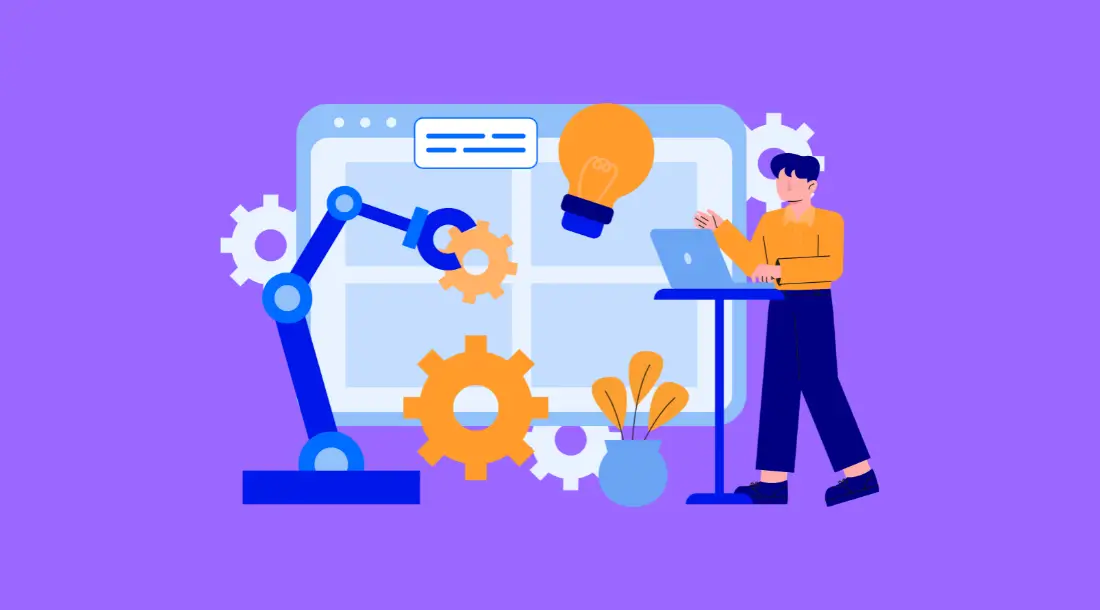
Predictive scheduling and follow-up sequences elevate automation even further. Using machine learning, AI for B2B marketing identifies the optimal time to engage each contact, based on historical data and behavioral insights. It predicts when a lead is most likely to open an email, respond to outreach, or book a demo. This ensures that every touchpoint feels timely and relevant, improving conversion rates and reducing missed opportunities.
Chatbot-integrated nurturing flows provide continuous engagement and seamless data collection. AI chatbots can qualify leads, schedule meetings, or deliver tailored content recommendations 24/7. They interpret user intent, personalize conversations, and feed data back into CRM systems in real time. This creates a feedback loop where every interaction enriches the customer profile, enabling future automation to become even more precise.
By transforming rigid workflows into adaptive ecosystems, AI for B2B marketing ensures that automation evolves alongside customer intent, making every action more strategic, contextual, and outcome-oriented.
Smart CRM and Predictive Customer Management
Customer Relationship Management systems are essential for tracking interactions, managing pipelines, and coordinating marketing and sales activities. Yet, in many organizations, CRMs act as static repositories of data rather than active drivers of strategy. AI for B2B marketing changes this dynamic by infusing CRMs with predictive intelligence, automation, and analytical depth—turning them into proactive systems that anticipate customer needs and guide decision-making.
AI forecasting for opportunities and deal closures is one of the most impactful applications. Traditional forecasting relies on historical averages or subjective sales inputs, which can lead to overestimation or missed opportunities. AI-driven forecasting models analyze real-time data, including lead engagement patterns, deal velocity, and account-level activity, to predict the likelihood and timing of deal closures. For example, if an account’s interaction levels suddenly decline, AI can alert sales teams about potential churn risks or suggest re-engagement tactics. This predictive visibility empowers organizations to plan resources effectively and maintain a healthy sales pipeline.

Data enrichment and cleansing form the foundation of accurate CRM performance. AI for B2B marketing automates the process of updating contact details, removing duplicates, and filling in missing information by cross-referencing multiple data sources. It can also identify inactive leads or outdated records, ensuring that marketing campaigns are based on clean, reliable data. This not only improves efficiency but also enhances personalization accuracy, as teams can trust that their insights are grounded in current information.
AI-based task prioritization takes CRM intelligence to the next level. By analyzing account interactions, purchase intent, and engagement trends, AI can automatically rank leads and opportunities by urgency or revenue potential. It suggests which leads sales teams should contact first and what type of messaging will be most effective. For marketing teams, AI can prioritize which accounts to include in campaigns based on propensity-to-convert scores. This enables both departments to focus on high-impact activities rather than manual data sorting.
Through AI for B2B marketing, CRMs evolve from passive tracking tools into intelligent systems that drive action, forecast success, and strengthen customer relationships.
Integrating AI Tools with HubSpot, Salesforce, and Odoo
The true potential of AI for B2B marketing is realized when it seamlessly integrates with core business systems like HubSpot, Salesforce, and Odoo. These platforms serve as central hubs for managing marketing, sales, and customer data, and AI enhances their capabilities through automation, analytics, and intelligent recommendations. By embedding AI tools directly into these CRMs and automation platforms, businesses can unlock new levels of efficiency, accuracy, and scalability.
AI integrations often begin with plugins and apps that extend the functionality of existing platforms. In HubSpot, for example, AI tools can automate content scoring, recommend optimal send times for email campaigns, and analyze customer sentiment from contact records. Salesforce offers Einstein AI, a built-in suite of predictive analytics tools that forecast revenue, identify upsell opportunities, and analyze customer engagement patterns. Odoo, an open-source ERP and CRM solution, allows AI modules for lead scoring, behavior tracking, and predictive customer support—all of which help align marketing and sales strategies around real-time insights.
Example workflows illustrate how AI transforms daily operations in these systems. For instance:
- Lead Routing: AI automatically assigns new leads to the most suitable sales representative based on location, expertise, or historical conversion performance.
- Email Scoring: Machine learning models evaluate email engagement data to assign quality scores, helping marketers identify which campaigns drive the most impact.
- Opportunity Prediction: AI analyzes pipeline data to determine which deals are most likely to close and suggests next best actions, such as scheduling a demo or sending a tailored offer.
Beyond individual workflows, AI integration fosters synergy between marketing and sales. Predictive insights from Salesforce can feed directly into HubSpot campaigns, while Odoo’s automation features can update lead data based on AI scoring models. This creates a unified, cross-functional ecosystem where every system communicates seamlessly, eliminating silos and improving alignment across teams.
The best practices for implementing AI for B2B marketing in CRM systems include:
- Start with Data Quality: Ensure foundational data is clean and consistent before deploying AI models.
- Integrate Gradually: Begin with small, high-impact workflows before expanding AI capabilities across departments.
- Align Teams Around Insights: Train marketing and sales teams to interpret and act on AI-driven recommendations.
- Monitor and Iterate: Continuously evaluate model performance and refine configurations for evolving business goals.
By integrating AI tools with HubSpot, Salesforce, and Odoo, organizations can transform their CRMs into intelligent ecosystems that anticipate customer needs, automate manual processes, and drive measurable business growth. AI for B2B marketing thus becomes the connective tissue that unifies technology, data, and human expertise into a seamless and adaptive marketing engine.
AI for B2B Email Marketing and Outreach
Email marketing remains one of the most effective channels for B2B communication, nurturing, and conversion. However, in today’s data-saturated environment, generic mass emails are no longer sufficient to capture attention or drive engagement. Decision-makers expect relevance, precision, and value in every message they receive. AI for B2B marketing bridges this gap by transforming email marketing from a static, rule-based function into an intelligent, adaptive, and predictive communication engine.
Through AI-driven algorithms, machine learning models, and natural language processing, businesses can now predict engagement, personalize messaging, and automate outreach at scale. AI for B2B marketing analyzes behavioral patterns, intent signals, and historical performance data to ensure that every email reaches the right recipient, at the right time, with the right content. This not only increases open and click-through rates but also strengthens brand credibility and accelerates lead nurturing throughout the sales funnel.
Intelligent Email Campaign Optimization
The foundation of effective email marketing lies in understanding audience behavior—what motivates recipients to open an email, engage with its content, or take the desired action. Traditional A/B testing and fixed scheduling strategies often fail to capture the nuances of human behavior in B2B contexts, where buying cycles are longer and decisions involve multiple stakeholders. AI for B2B marketing revolutionizes email campaign optimization by enabling predictive analytics, adaptive timing, and hyper-personalized content delivery.
Predicting open and click rates is one of the most practical applications of AI for B2B marketing. By analyzing historical campaign performance, recipient interaction histories, and contextual data such as industry or job role, AI models can forecast engagement probabilities before an email is even sent. For example, AI can identify which subject lines are most likely to generate opens among CFOs in the manufacturing sector versus IT directors in healthcare. These predictive insights enable marketers to prioritize campaigns that are statistically more likely to succeed, reducing trial-and-error efforts and wasted resources.

Smart send-time optimization is another crucial advancement. Rather than relying on fixed schedules, AI algorithms determine the optimal time to deliver emails based on each recipient’s behavior. For instance, a procurement manager might typically check emails early in the morning, while a marketing executive engages during lunch hours. AI continuously learns these patterns and adapts delivery schedules in real time. This ensures that messages arrive when recipients are most receptive, significantly boosting open and engagement rates.
Dynamic content customization by recipient type further enhances campaign relevance. Using firmographic and behavioral data, AI for B2B marketing automatically tailors email content for each recipient segment. A CEO might receive strategic insights on ROI and innovation, while a technical manager receives detailed implementation guidance. AI can dynamically insert personalized text, visuals, and CTAs without manual intervention, maintaining consistency while scaling personalization across thousands of contacts.
By applying these AI-driven capabilities, B2B marketers can create campaigns that feel uniquely human while operating with machine-level precision. Email outreach becomes not just a channel for communication, but a strategic touchpoint for nurturing trust and driving conversions.
AI-Powered Copywriting and A/B Testing
Content quality and emotional resonance are at the heart of effective email marketing. However, consistently producing high-performing email copy at scale can be challenging, especially when targeting diverse audiences with different motivations and communication preferences. AI for B2B marketing provides an advanced solution by automating copy generation, optimizing tone, and running continuous A/B tests that refine messaging based on empirical results rather than guesswork.
Subject line generation is one of the most visible applications of AI-powered copywriting. Using natural language processing (NLP), AI systems can craft subject lines tailored to each segment’s behavior and preferences. For example, NLP tools can analyze engagement data to determine whether action-oriented, question-based, or benefit-driven subject lines perform best for a specific audience. AI can then generate multiple variants instantly, allowing marketers to choose the ones most likely to increase open rates.

Emotional tone analysis takes personalization a step further. By leveraging sentiment analysis and linguistic modeling, AI evaluates how different tones—such as urgency, curiosity, or empathy—impact recipient engagement. For instance, executives may respond better to authoritative and concise messaging, while technical specialists might prefer informative and data-driven language. AI for B2B marketing continuously measures responses and adjusts tone accordingly, ensuring that the emotional resonance aligns with audience expectations and communication styles.
Continuous learning from campaign performance forms the backbone of AI-driven optimization. Instead of static A/B testing where two versions compete for a limited time, AI runs multivariate tests across multiple variables—including subject lines, visuals, CTAs, and layouts. Machine learning models analyze user behavior in real time and automatically promote the highest-performing combinations. This means that each subsequent campaign benefits from the lessons of previous ones, creating a perpetual cycle of improvement.
By integrating AI into copywriting and testing workflows, B2B marketers can eliminate creative bottlenecks, improve engagement metrics, and maintain a consistent brand voice across campaigns. AI for B2B marketing thus bridges the gap between creativity and performance, enabling content that not only attracts attention but also inspires meaningful action.
Nurture Sequences and Behavioral Triggers
In B2B marketing, nurturing leads through long sales cycles is as important as acquiring them. A well-structured nurture sequence builds trust, provides education, and guides prospects toward decision-making. However, static drip campaigns often fail to adapt to changing buyer intent or engagement patterns. AI for B2B marketing introduces intelligence and adaptability to lead nurturing by dynamically adjusting messages, timing, and workflows based on real-time behavior and predictive insights.
Personalized drip campaigns using AI insights form the foundation of this approach. Instead of delivering a predetermined sequence of emails, AI monitors how each lead interacts with content—what they open, click, or ignore—and adjusts the next communication accordingly. For example, if a lead downloads a product whitepaper, AI may automatically follow up with a case study or ROI calculator. Conversely, if engagement drops, the system might switch to lighter educational content to reawaken interest. This ensures that nurturing paths are unique to each lead’s stage and motivation.
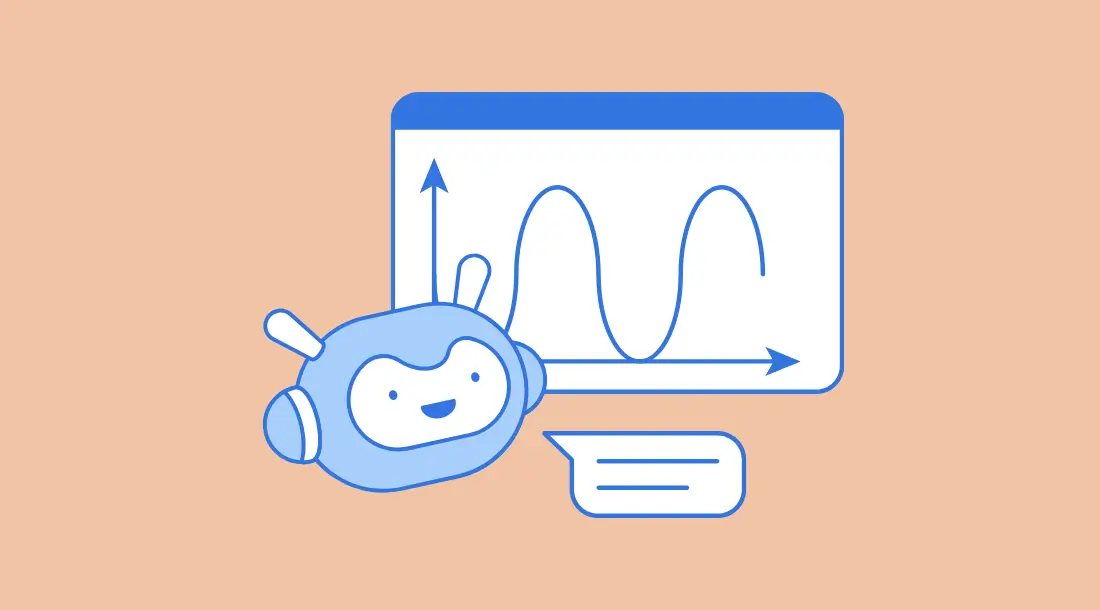
Predictive unsubscribe and churn prevention mechanisms help maintain list health and engagement. AI models can detect early signs of disengagement by analyzing patterns such as decreasing open rates, skipped emails, or reduced website visits. When these signals appear, AI for B2B marketing can proactively modify the frequency, tone, or content type to re-engage the recipient before they unsubscribe. In some cases, it can even trigger a reactivation sequence with special offers or personalized surveys to understand pain points.
Integration with CRM behavior scoring completes the feedback loop between marketing and sales. By connecting email engagement data with CRM systems, AI calculates behavior-based lead scores that indicate readiness to convert. For instance, a lead who consistently interacts with product comparisons and pricing emails will automatically be flagged as high intent, prompting sales to follow up. This creates a seamless transition between nurturing and conversion, ensuring that no qualified lead goes unnoticed.
Through behavioral intelligence and predictive personalization, AI for B2B marketing transforms lead nurturing from a passive communication process into a dynamic dialogue. It ensures that every touchpoint is relevant, timely, and strategically aligned with the buyer’s journey. As a result, AI-driven email marketing not only increases conversions but also deepens relationships—turning potential customers into loyal advocates over time.
AI for B2B Social Media and Branding
Social media has evolved far beyond being a space for casual interaction—it has become a vital arena for brand positioning, thought leadership, and lead generation in the B2B ecosystem. Yet, the challenge for most businesses lies in the overwhelming volume of online data, rapid shifts in audience preferences, and the need for constant engagement across multiple channels. AI for B2B marketing addresses these challenges by combining data analytics, automation, and creativity to empower brands to understand, engage, and influence their audiences effectively.
By leveraging technologies like natural language processing (NLP), machine learning (ML), and computer vision, AI for B2B marketing allows companies to monitor brand sentiment, identify key influencers, predict content performance, and automate social interactions. Social platforms, once treated as auxiliary tools, are now central to brand identity and customer relationship management—driven by insights that only AI can uncover.
Social Listening and Sentiment Analysis
Social listening and sentiment analysis are among the most transformative applications of AI for B2B marketing. They enable brands to understand how they are perceived online, what conversations their target audiences are engaging in, and where opportunities or risks may lie. In B2B markets, where reputation, trust, and expertise are critical, this deep understanding of audience sentiment allows businesses to refine messaging, anticipate market needs, and strengthen their digital presence.
Brand monitoring with NLP and ML sentiment tools is the first step in this process. AI-powered systems continuously scan millions of online interactions across platforms like LinkedIn, X (formerly Twitter), industry forums, and niche communities. NLP algorithms analyze textual data—posts, comments, reviews, and mentions—to detect sentiment, intent, and emotional tone. For instance, AI can differentiate between genuine praise, sarcasm, or criticism, even in complex B2B contexts where conversations often involve technical terminology. These insights help marketing teams identify positive brand associations or address negative perceptions before they escalate.
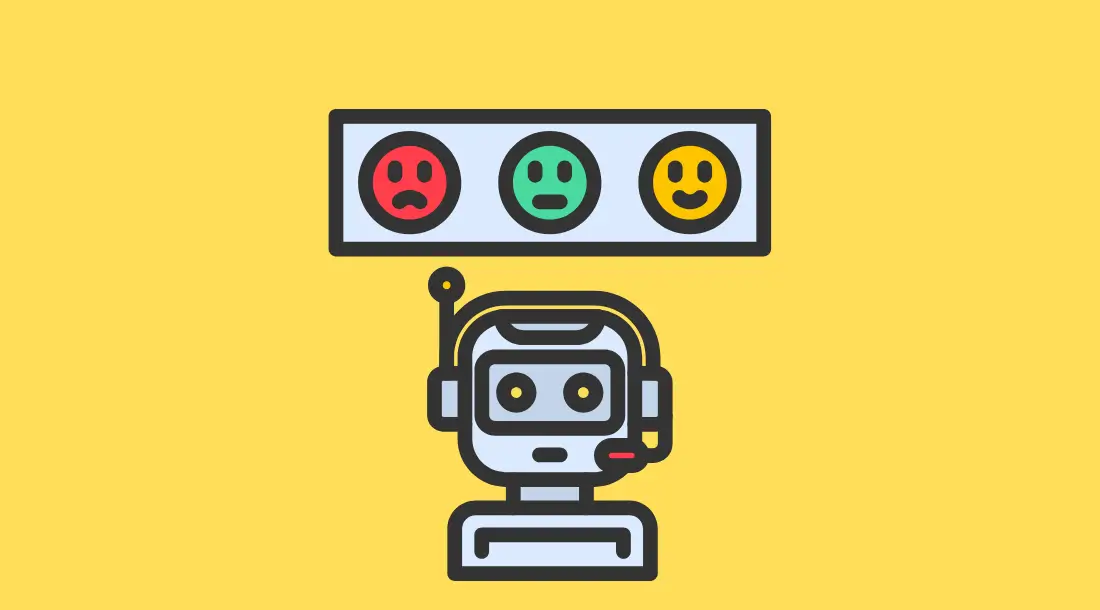
Identifying influencers and conversation clusters is another key capability. AI for B2B marketing uses network analysis and topic modeling to detect individuals or organizations that consistently drive engagement around specific topics relevant to the business. For example, a software company might use AI to find thought leaders in AI ethics or data security based on their social impact, rather than follower count alone. AI systems also map conversation clusters—groups of users engaging around shared themes—allowing brands to join discussions strategically, provide insights, or position themselves as authoritative voices within these networks.
Competitor engagement tracking provides additional strategic context. AI monitors competitors’ social activities, measuring engagement metrics, content themes, and sentiment trends across platforms. By comparing these data points, businesses can identify content gaps, emerging trends, or differentiation opportunities. For instance, if AI detects that competitors are gaining traction with sustainability-focused content, a company might adjust its branding to highlight its eco-friendly initiatives or innovation-driven solutions.
Through social listening and sentiment analysis, AI for B2B marketing transforms raw online data into actionable intelligence. It enables marketers to perceive not just what audiences are saying, but why they are saying it—offering the clarity needed to shape brand narratives that resonate authentically across the digital landscape.
Content Scheduling and Optimization
Consistency and timing are the cornerstones of effective social media marketing. However, determining what to post, when to post it, and how often to engage remains one of the most complex challenges in B2B marketing. AI for B2B marketing simplifies this process through predictive analytics, automated curation, and intelligent design, ensuring that every post contributes strategically to brand visibility and engagement.
Predictive posting time analysis is one of the most impactful applications of AI in this domain. Machine learning models analyze historical engagement data, audience demographics, and time-zone patterns to identify when followers are most likely to interact with a brand’s content. Unlike static posting schedules, AI-driven systems adjust timing dynamically, accounting for external factors such as regional holidays, industry events, or even breaking news. This ensures that posts reach audiences during their most active and receptive hours, maximizing engagement rates and brand recall.

Smart content curation for industry engagement allows businesses to maintain a steady flow of relevant, high-value content without overwhelming their teams. AI tools automatically source, categorize, and recommend articles, reports, or discussions that align with specific business themes or industry trends. For instance, an enterprise SaaS provider might use AI to identify and share thought leadership pieces on digital transformation or cloud innovation. Over time, the AI system learns which types of curated content generate the most interaction and adjusts future recommendations accordingly.
Visual post generation using AI design tools takes branding to another level of creativity and consistency. These systems can create tailored visuals—such as infographics, banners, or short-form videos—based on predefined brand guidelines. AI analyzes which visual styles, color palettes, and layouts perform best for each audience segment and automatically optimizes future designs to match those preferences. For example, if data suggests that minimalist visuals perform better for executive audiences, the AI can adjust templates across all campaigns to align with that aesthetic.
AI for B2B marketing in content scheduling and optimization thus moves beyond automation—it introduces strategic foresight into how brands communicate. Posts become data-backed touchpoints that reinforce authority, align with audience interests, and maintain brand consistency across all platforms. Each piece of content, whether original or curated, becomes a deliberate contribution to a company’s broader brand identity and thought leadership narrative.
Measuring Social ROI with AI
While social media engagement metrics such as likes and comments are useful indicators of visibility, B2B organizations require deeper insight into how these activities contribute to tangible business outcomes. Measuring return on investment (ROI) from social media is a persistent challenge because of the complex, multi-touch nature of B2B buyer journeys. AI for B2B marketing addresses this complexity by introducing advanced analytics models that link social activity to business results through attribution, prediction, and integrated data analysis.
Performance prediction models are central to this process. By analyzing historical engagement, conversion data, and audience interactions, AI can predict the potential success of upcoming social campaigns. For example, before launching a new LinkedIn ad series, an AI system can estimate expected click-through and lead conversion rates based on past performance and real-time audience trends. These models continuously refine their accuracy as they ingest new data, allowing marketers to make informed decisions about budget allocation and content focus before campaigns go live.
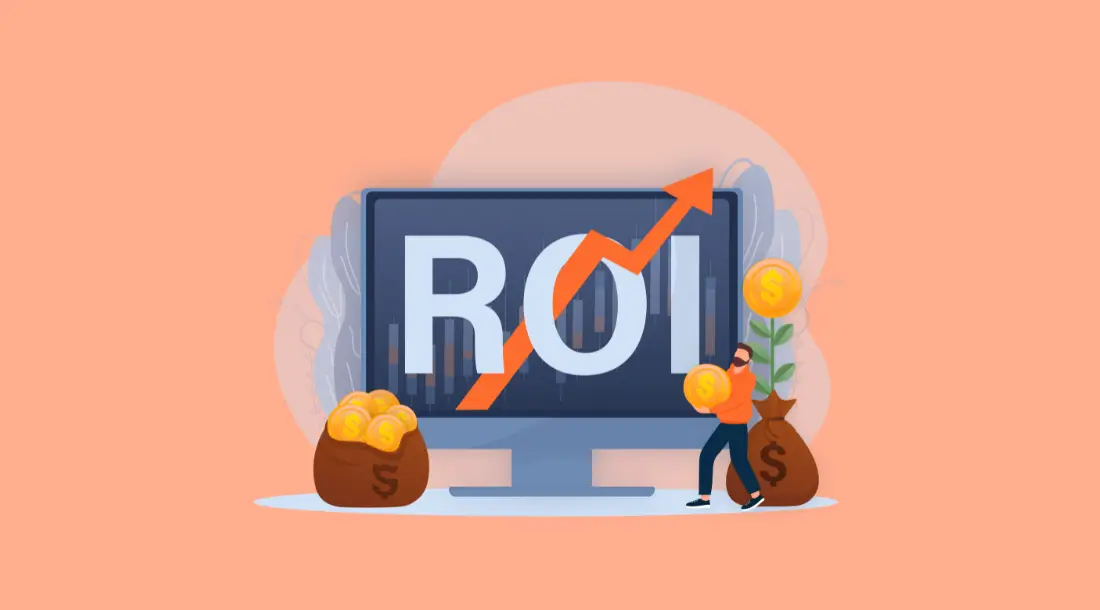
AI-based attribution to leads and conversions provides the missing link between social media engagement and revenue generation. Instead of relying on simple first-touch or last-touch attribution, AI uses multi-touch models to track how each social interaction influences the sales pipeline. For instance, an AI model might determine that a lead who engaged with a company’s webinar post on LinkedIn, followed by reading a blog post and opening a marketing email, is more likely to convert than a lead who interacted only once. This holistic approach clarifies the real impact of social engagement on deal progression and revenue growth.
Insights from cross-platform engagement data further enrich strategic decision-making. AI integrates information from various channels—LinkedIn, YouTube, X, Facebook, and even niche forums—to provide a unified view of audience behavior. It identifies which platforms generate the highest-quality interactions, which topics drive the most engagement, and where the brand’s influence is strongest. For example, AI might reveal that while LinkedIn generates the most impressions, X drives more meaningful conversations, leading marketers to adjust their strategy accordingly.
AI for B2B marketing in social ROI measurement transforms scattered engagement metrics into a coherent story of performance and growth. It connects brand awareness activities to measurable business outcomes, ensuring that social media is not treated as an isolated effort but as a fully integrated component of the marketing ecosystem. Through AI-powered attribution and predictive analysis, B2B organizations can finally quantify the value of their digital presence and use data-driven insights to refine branding strategies for sustained success.
AI for B2B Analytics, Insights, and Forecasting
Analytics and forecasting have always been critical in guiding B2B marketing decisions. However, the complexity of modern data—spanning multiple channels, customer touchpoints, and organizational systems—makes manual analysis insufficient for timely and accurate decision-making. AI for B2B marketing transforms analytics from a backward-looking process into a predictive and prescriptive discipline. By leveraging machine learning, predictive modeling, and advanced visualization tools, businesses can not only understand what happened but also anticipate what will happen and determine the best actions to take next.
Through AI for B2B marketing, organizations gain the ability to process large datasets, uncover hidden patterns, and generate actionable insights in real time. From predicting deal probabilities to visualizing performance data through dynamic dashboards, AI provides marketing teams with a powerful decision-making framework that enhances agility, precision, and profitability.
Predictive Marketing Analytics
Predictive marketing analytics represents one of the most transformative uses of AI for B2B marketing. Instead of relying on descriptive metrics like past performance or campaign averages, predictive analytics uses historical and real-time data to forecast future outcomes. By identifying leading indicators of success—or failure—AI allows businesses to optimize their marketing strategies proactively.
Identifying pipeline velocity and deal probability is one of the most important applications of predictive analytics. Using AI algorithms, companies can analyze factors such as engagement frequency, lead source quality, response times, and interaction history to determine how quickly leads move through the pipeline. AI for B2B marketing can predict the likelihood of deal closure based on previous patterns, helping teams prioritize opportunities that are most likely to convert. For instance, AI might reveal that leads nurtured through personalized webinars have a higher close rate than those acquired via cold email, allowing marketers to invest more heavily in high-performing channels.
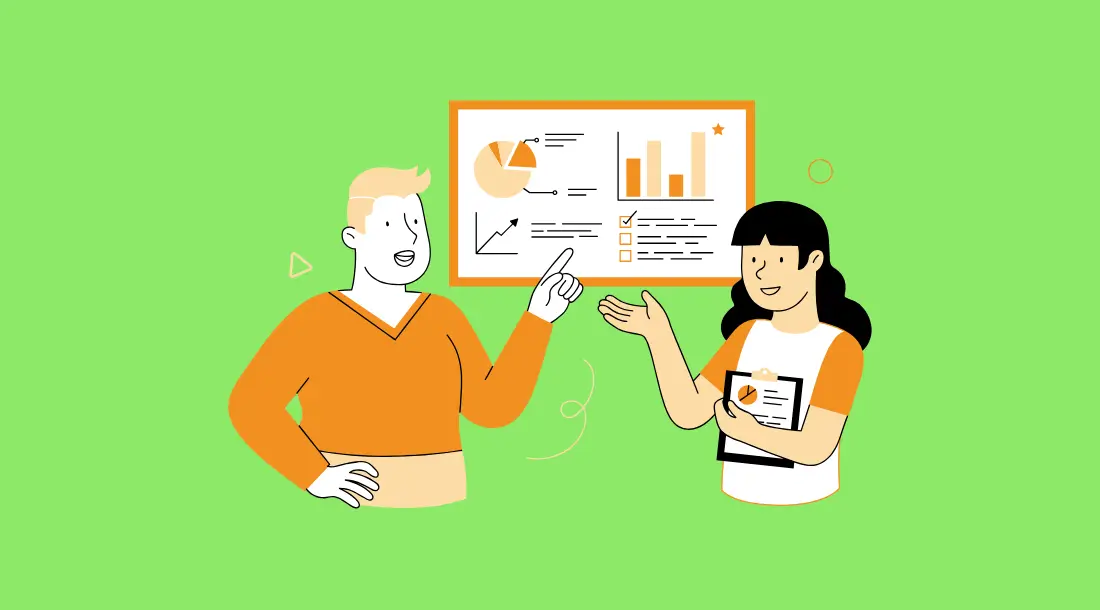
Early-warning models for customer churn are another vital aspect. Churn prediction models track behavioral signals such as reduced engagement, fewer logins, or a decline in email response rates to identify customers at risk of leaving. AI analyzes these patterns and assigns a churn probability score to each account. By detecting these risks early, companies can take proactive measures such as targeted outreach, loyalty incentives, or re-engagement campaigns. AI for B2B marketing ensures that customer retention becomes a data-driven process rather than a reactive one.
Forecasting marketing ROI and campaign success rounds out the capabilities of predictive analytics. AI evaluates factors like campaign type, audience demographics, and spend levels to estimate expected outcomes even before a campaign launches. Over time, the system learns which variables most strongly influence ROI, refining forecasts continuously. This level of foresight allows marketing leaders to allocate budgets more strategically, minimize waste, and ensure that investments generate measurable returns.
Predictive marketing analytics powered by AI for B2B marketing can therefore be summarized through three primary capabilities:
- Pipeline Forecasting: AI predicts lead progression and conversion likelihood for better prioritization.
- Churn Prediction: Machine learning identifies early disengagement signals, enabling retention strategies.
- ROI Forecasting: AI estimates future performance and campaign profitability before launch.
By transforming marketing analytics into a forward-looking system, AI helps organizations move from static reporting to active prediction, ensuring that every decision is grounded in evidence and foresight rather than intuition.
Data Visualization and Storytelling with AI
Even the most accurate data is only as valuable as its clarity and accessibility. In complex B2B environments, where marketing decisions often involve multiple stakeholders, data visualization plays an essential role in communicating insights effectively. AI for B2B marketing enhances this capability through automated dashboards, real-time analytics, and intelligent visualization tools that convert raw data into narratives that decision-makers can easily interpret and act upon.
Automated dashboards using natural language queries are among the most impactful advancements. AI-driven platforms now allow users to interact with data conversationally—typing or even speaking queries such as “What was our lead conversion rate last quarter?” or “Which campaigns generated the highest ROI in healthcare accounts?” Natural language processing (NLP) translates these queries into database calls and instantly generates visual responses. This democratizes data access, enabling non-technical team members to explore analytics independently and make informed decisions faster.

Real-time visual reports from large datasets further enhance responsiveness. Traditional reporting cycles often require manual updates and static presentations, which quickly become outdated. With AI for B2B marketing, data visualization systems continuously pull fresh data from integrated sources such as CRM, marketing automation platforms, and ad networks. This ensures that dashboards always reflect the current state of campaigns, allowing marketers to identify trends, anomalies, or opportunities immediately. For instance, if an AI-powered dashboard detects a sudden spike in engagement for a specific campaign, it can alert the team to amplify that campaign’s reach in real time.
Tools like Looker, Power BI, and Tableau with AI add-ons take these capabilities to the next level. These platforms now incorporate AI features such as predictive modeling, anomaly detection, and auto-generated narratives. Instead of simply displaying metrics, they can automatically interpret trends, flag performance issues, and even suggest corrective actions. For example, Power BI’s AI integration can detect a downward trend in webinar attendance and recommend adjusting the timing or promotional strategy based on past performance data.
The key components of AI-enhanced data visualization and storytelling include:
- Conversational Analytics: Natural language interfaces make data exploration intuitive and accessible.
- Real-Time Reporting: Continuous updates ensure decisions are based on the latest insights.
- Automated Storytelling: AI generates written summaries and recommendations alongside visuals.
- Integrated Intelligence: Tools like Looker and Tableau use AI to interpret trends automatically.
By combining data accuracy with narrative clarity, AI for B2B marketing turns analytics into a strategic communication tool. It empowers teams to move beyond static numbers and see the story behind the data—revealing not just what’s happening, but why it matters and what actions should follow.
Turning Data into Strategy
The ultimate goal of analytics is not just to collect or visualize data but to convert insights into strategic action. AI for B2B marketing closes this loop by translating data-driven intelligence into decisions that shape campaigns, budgets, and long-term growth strategies. With its ability to analyze massive datasets, recognize patterns, and generate contextual recommendations, AI acts as both analyst and advisor—helping organizations make smarter, faster, and more profitable marketing decisions.
AI insights inform budget allocation and campaign strategy by identifying which channels, campaigns, or customer segments deliver the highest returns. Instead of distributing budgets evenly or relying on past performance alone, AI dynamically reallocates spending based on predictive ROI models. For example, if AI identifies that paid search campaigns targeting mid-market companies outperform enterprise-focused display ads, it can recommend shifting funds accordingly. This ensures that marketing resources are always invested where they will have the greatest impact.

Aligning analytics with organizational KPIs is another vital application. AI for B2B marketing doesn’t operate in isolation—it connects marketing performance metrics to broader business objectives such as revenue growth, customer lifetime value, or market share expansion. By linking marketing data directly to sales and operational outcomes, AI enables executives to evaluate the strategic value of marketing initiatives in terms that resonate across the organization. This alignment fosters stronger collaboration between marketing, sales, and finance teams.
The future of AI-driven decision intelligence lies in its ability to provide not only predictions but prescriptions. Beyond identifying patterns, AI systems can simulate scenarios and recommend optimal courses of action. For instance, if a company faces declining engagement from a key market segment, AI might propose specific adjustments such as modifying messaging tone, reallocating ad spend, or adjusting pricing strategies based on data correlations. Over time, these systems learn from the outcomes of their recommendations, refining strategies for continuous improvement.
Key strategic functions that define AI-driven decision-making include:
- Budget Optimization: Dynamic reallocation ensures marketing spend aligns with real-time ROI potential.
- KPI Integration: AI links marketing analytics with top-level business metrics for unified performance measurement.
- Scenario Simulation: Predictive models test potential strategies before implementation to reduce risk.
- Prescriptive Intelligence: AI evolves from predicting results to suggesting actionable decisions.
Turning data into strategy is where the full power of AI for B2B marketing becomes evident. It transforms analytics from a reporting mechanism into a strategic engine that guides every aspect of marketing and business growth. As organizations continue to mature in their use of AI, decision intelligence will become not just a competitive advantage but an essential capability—empowering marketers to anticipate trends, adapt to change, and lead with confidence in an increasingly data-driven world.
Case Studies: Real-World AI Success Stories in B2B Marketing
While the theoretical advantages of AI for B2B marketing are widely discussed—such as efficiency gains, personalization, and predictive analytics—the most compelling evidence of its transformative power comes from real-world success stories. Across industries, AI is reshaping how B2B companies attract, engage, and retain clients. From predictive lead scoring to content automation and dynamic campaign optimization, these case studies illustrate how organizations are using AI not just to streamline operations but to revolutionize customer relationships, boost ROI, and drive long-term growth.
AI for B2B marketing has evolved beyond experimental adoption; it is now an integral part of enterprise marketing strategies worldwide. The following case studies showcase practical implementations of AI technologies—highlighting how leading companies are using artificial intelligence to unlock business insights, personalize experiences, and strengthen marketing impact across complex ecosystems.
IBM Watson for ABM Personalization
IBM’s use of AI for B2B marketing through its Watson technology is a hallmark example of how artificial intelligence can drive hyper-personalized experiences for enterprise clients. By leveraging data across thousands of accounts and applying advanced machine learning models, IBM was able to reimagine its Account-Based Marketing strategy and achieve unprecedented efficiency in targeting and personalization.
IBM Overview
IBM (International Business Machines Corporation) is one of the world’s most established technology companies, operating across sectors such as cloud computing, artificial intelligence, cybersecurity, and enterprise solutions. With a legacy of innovation and an extensive client base spanning industries like healthcare, finance, and manufacturing, IBM has long been at the forefront of digital transformation.
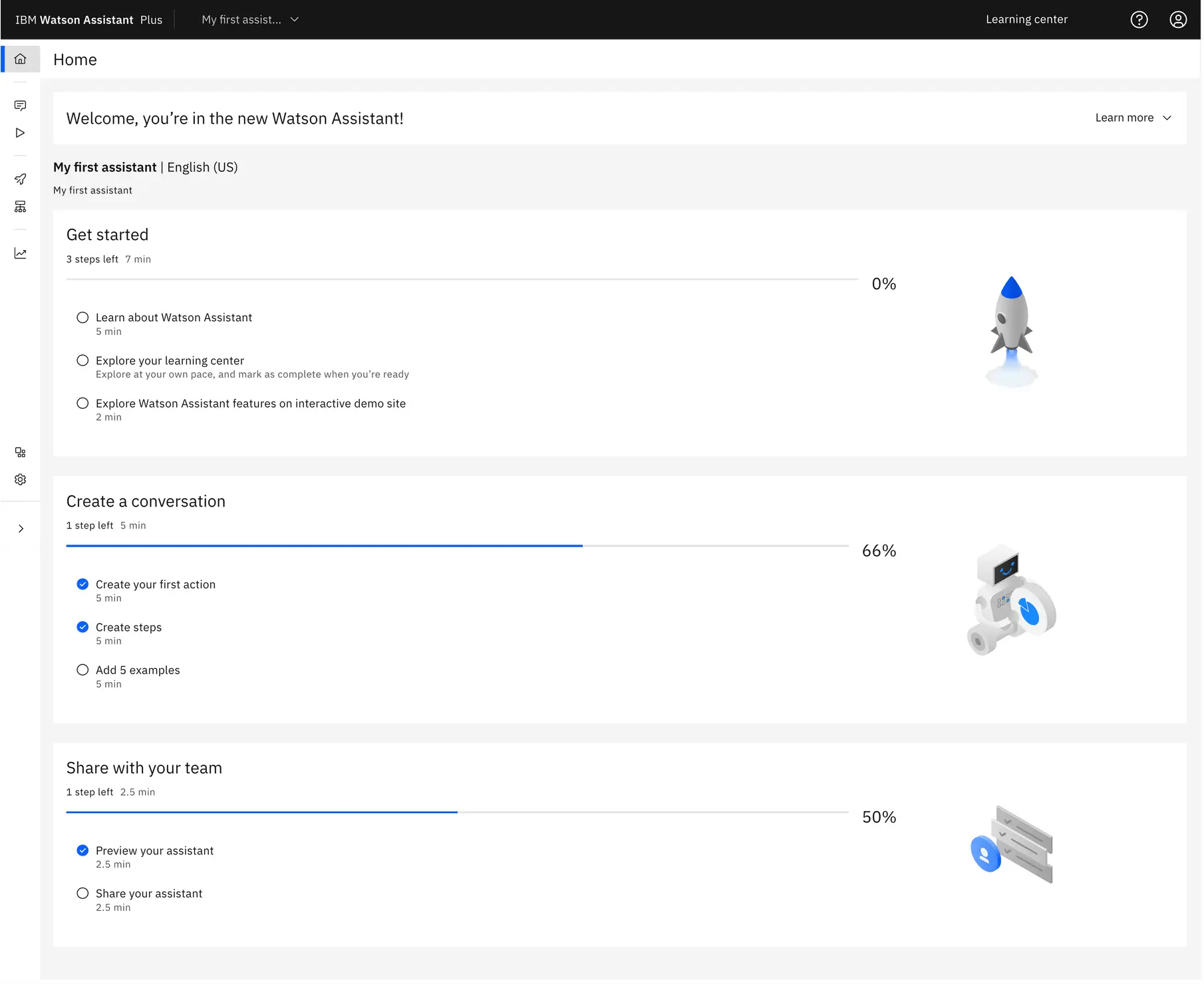
In recent years, IBM recognized that as the B2B buying process became increasingly complex—with multiple stakeholders, longer decision cycles, and higher expectations for personalization—traditional marketing approaches were no longer sufficient. To maintain its leadership in enterprise technology, IBM turned to its own AI system, Watson, to revolutionize how it approached B2B engagement and marketing personalization at scale.
Background & Problem
Before implementing AI-driven marketing strategies, IBM faced several key challenges common in large-scale B2B operations: fragmented data, limited personalization capabilities, and inefficient lead prioritization.
The core issues included:
- Fragmented Data Ecosystem: IBM’s global client database contained millions of touchpoints across various business units, marketing channels, and regions. Integrating these datasets to form a unified view of each account was complex and resource-intensive.
- Generic ABM Campaigns: While IBM had an established Account-Based Marketing model, its personalization efforts were largely rule-based. Campaigns often lacked the contextual depth needed to resonate with decision-makers in specific industries or roles.
- Manual Targeting and Scoring: Identifying and prioritizing high-value accounts required manual analysis by marketing teams, which slowed down campaign deployment and reduced responsiveness to market trends.
- Difficulty Measuring Impact: IBM’s global operations required consistent measurement frameworks for ROI, engagement, and conversion efficiency. Traditional analytics systems provided limited insights into customer intent or long-term engagement trends.
These challenges highlighted the need for an AI-powered solution that could automate decision-making, enable scalable personalization, and deliver deeper insights across IBM’s entire marketing ecosystem.
AI Solution Applied
IBM’s solution centered on embedding Watson AI into its Account-Based Marketing framework to deliver predictive insights, automate personalization, and enhance engagement strategies. The goal was to use AI for B2B marketing not only as a technological upgrade but as a strategic engine that drives business outcomes.
Watson’s implementation encompassed several integrated applications:
- Predictive Account Targeting: Watson analyzed firmographic, technographic, and behavioral data from IBM’s CRM and external databases to identify high-potential accounts. Machine learning models predicted which companies were most likely to engage or convert based on historical purchase trends and digital behavior.
- Personalized Content Recommendations: Using natural language processing (NLP), Watson matched IBM’s vast library of marketing assets—whitepapers, case studies, videos, and product demos—to each account’s specific pain points, industry context, and stage in the buying journey.
- Dynamic Campaign Orchestration: Watson’s AI determined optimal communication channels, timing, and message frequency for each account. It adjusted campaign flows in real time based on engagement feedback, ensuring every interaction felt relevant and timely.
- Intent Data and Behavioral Scoring: By analyzing online behavior signals—such as search queries, event attendance, and content engagement—Watson provided marketing teams with a ranked list of accounts showing strong purchase intent.
- Feedback Loop Integration: The AI models continuously learned from performance data, improving targeting accuracy and personalization depth over time.
In essence, AI for B2B marketing through Watson allowed IBM to transform ABM into an intelligent, adaptive ecosystem capable of learning, predicting, and optimizing at scale.
Implementation Process
The implementation of Watson AI in IBM’s marketing operations followed a structured, multi-phase approach that combined data unification, model training, and continuous optimization.
- Data Integration and Preparation: IBM consolidated data from its CRM (Salesforce), marketing automation platforms, and external sources such as LinkedIn and industry directories. AI models were trained on this unified dataset, which represented millions of touchpoints across industries and geographies.
- Model Training and Customization: Watson’s machine learning algorithms were trained to identify account-specific engagement triggers and predict conversion probabilities. Models were adjusted by region and industry to ensure contextual accuracy.
- Workflow Automation: IBM embedded Watson into its existing ABM workflows, integrating it with marketing automation systems to automate account scoring, content distribution, and campaign timing.
- Personalization Engine Deployment: The AI engine was rolled out globally, enabling real-time personalization for each target account. Marketing and sales teams could access dashboards that displayed predictive insights and recommended next-best actions.
- Continuous Learning and Optimization: Post-launch, Watson continuously analyzed engagement data, campaign performance, and sales outcomes. The AI models adapted dynamically, refining recommendations and improving lead prioritization accuracy over time.
Throughout the process, IBM ensured strong collaboration between its data science, marketing, and sales teams. This cross-functional integration was critical to ensuring that the AI for B2B marketing strategy was aligned with overall business objectives and measurable KPIs.
Results and ROI Metrics
The deployment of AI for B2B marketing via IBM Watson has generated measurable improvements in operational efficiency and business outcomes, particularly in large-scale enterprise settings. While exact figures vary by implementation, publicly available studies and reports provide credible benchmarks for performance.
The analysed benefits include:
- A Total Economic Impact™ (TEI) study commissioned by IBM and conducted by Forrester Consulting found that a composite enterprise using Watson Assistant (a related Watson module) achieved a risk-adjusted payback in under six months and a three-year ROI of approximately 337%. (IBM)
- In the same study, the composite organisation realised savings of more than US $13 million in containment of customer and internal conversations, by reducing human-handled interactions and enabling automation.(IBM)
- As part of broader AI for B2B marketing initiatives, IBM’s own “AI personalization” insights highlight that organisations prioritising customer experience and personalization can achieve up to three times the revenue growth of their peers. (IBM)
These results demonstrate that when AI for B2B marketing is strategically implemented—with high-quality data, integrated workflows, and clear KPIs—it can transform marketing and sales functions by accelerating conversion, reducing manual effort, and improving ROI visibility.
In conclusion, IBM’s application of Watson demonstrates the full potential of AI for B2B marketing as both a strategic enabler and operational powerhouse. By merging predictive analytics, personalization, and automation, IBM achieved a marketing transformation that not only improved efficiency but also redefined how enterprise-level marketing operates in the era of artificial intelligence. This case remains a benchmark for organizations aiming to leverage AI to drive measurable business impact and sustainable growth.
Salesforce Einstein for Predictive Lead Scoring
Salesforce has long been a cornerstone of enterprise sales and marketing technology, serving as one of the most widely adopted CRM platforms in the world. Its integration of AI through Salesforce Einstein represents a major step forward in the evolution of AI for B2B marketing—bringing predictive intelligence directly into daily marketing and sales operations. By embedding machine learning, natural language processing, and predictive analytics into Salesforce’s CRM ecosystem, Einstein empowers businesses to uncover patterns in customer behavior, forecast opportunities, and prioritize leads with unprecedented accuracy.
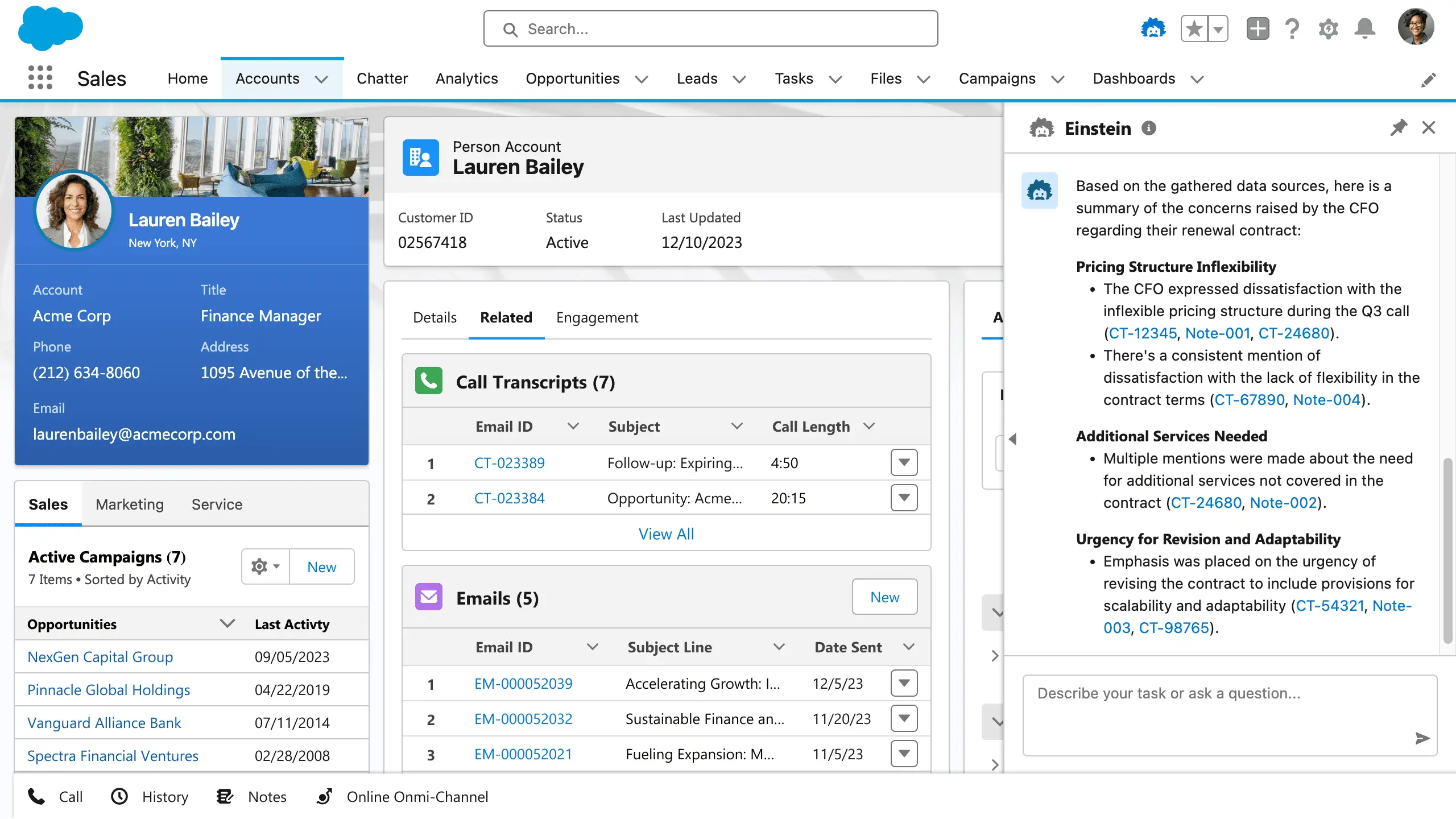
This case study illustrates how Salesforce leveraged AI to optimize predictive lead scoring—a process that transformed manual qualification into a data-driven, intelligent workflow. Through Einstein, Salesforce users now harness AI for B2B marketing to better understand which prospects are most likely to convert, how to allocate resources efficiently, and how to improve campaign performance with real-time learning loops.
Salesforce Overview
Salesforce is a global leader in customer relationship management, offering cloud-based solutions that connect marketing, sales, service, and analytics within a unified ecosystem. Founded in 1999, the company has revolutionized how businesses manage customer interactions by providing scalable, flexible platforms tailored to enterprise needs.
Recognizing the limitations of traditional data analysis within large CRMs, Salesforce launched Einstein—its built-in AI layer—to bring intelligent automation and predictive analytics to every user. This innovation positioned Salesforce as not just a CRM provider but as a driver of AI-driven marketing transformation, enabling organizations worldwide to use predictive insights for smarter decision-making and deeper customer engagement.
Background & Problem
Before the implementation of Einstein, Salesforce faced common challenges shared by many B2B organizations: the struggle to effectively qualify and prioritize leads from massive datasets. Traditional lead scoring methods relied heavily on static, rules-based systems designed by marketing teams, which were limited by human bias and outdated logic.
The main issues included:
- Inconsistent Lead Qualification: Manual scoring models varied across teams and regions, leading to subjective and inconsistent prioritization of prospects.
- Data Overload: With millions of leads entering the CRM from diverse sources, marketing and sales teams often lacked the tools to identify which leads demonstrated the strongest buying intent.
- Inefficient Sales Resource Allocation: Sales representatives spent significant time chasing low-quality leads, resulting in wasted effort and slower deal progression.
- Reactive Insights: Traditional analytics provided descriptive reports about past performance but offered little predictive foresight into which leads were likely to convert in the future.
These pain points highlighted the need for a smarter, AI-driven approach that could interpret data objectively, adapt to evolving market conditions, and deliver actionable recommendations directly within Salesforce’s workflow.
AI Solution Applied
To address these challenges, Salesforce introduced Einstein Predictive Lead Scoring—an AI-powered module designed to automate the evaluation of leads using historical data and behavioral patterns. This solution redefined lead scoring by transforming it from a static process into a dynamic, continuously learning system.
Einstein leverages machine learning and advanced analytics to identify which leads are most likely to convert based on hundreds of predictive factors. Key components of the solution include:
- Data Mining and Pattern Recognition: Einstein analyzes structured and unstructured CRM data, identifying recurring attributes in leads that previously converted—such as job title, industry, engagement frequency, and campaign source.
- Custom Predictive Models: Instead of using a one-size-fits-all algorithm, Einstein creates tailored models for each organization, reflecting their unique sales cycle, customer base, and product offering.
- Behavioral Scoring: The AI system continuously updates scores based on recent activities such as email engagement, website visits, event participation, and social interactions.
- Confidence Metrics: Each lead receives not just a score but also a confidence level, giving marketing teams clarity on which leads require immediate attention and which need further nurturing.
- Closed-Loop Learning: Einstein improves over time by continuously learning from new conversion data, refining its predictions with every sales cycle.
AI for B2B marketing in this context allows organizations to move from reactive to predictive lead management. Rather than manually interpreting spreadsheets and rules, marketers now rely on Einstein’s continuous learning process to automatically rank and prioritize high-value prospects.
Implementation Process
The implementation of Salesforce Einstein for predictive lead scoring followed a phased approach designed to ensure accuracy, adoption, and integration across marketing and sales functions.
- Data Consolidation and Cleaning: The first phase involved aggregating and cleansing CRM data from different regions and business units. AI models require clean, structured datasets to produce reliable predictions, so duplicate removal, normalization, and enrichment were essential.
- Model Configuration and Training: Einstein analyzed past lead-to-opportunity data to train its predictive models. Historical outcomes—both successful and unsuccessful conversions—were used to identify variables most correlated with deal closure.
- Integration with Existing Workflows: Salesforce embedded Einstein insights directly into CRM dashboards. Sales representatives could view lead scores within their familiar interface, ensuring a seamless transition to AI-guided decision-making.
- User Enablement and Feedback: Marketing and sales teams received training to understand how to interpret predictive scores and use them for strategic prioritization. Feedback loops were established to validate AI predictions against real-world results.
- Continuous Model Optimization: As new data entered the system, Einstein recalibrated its algorithms to maintain high accuracy. Salesforce also enabled configuration options for businesses to adjust weighting parameters according to their industry or sales cycle dynamics.
This iterative deployment ensured that AI for B2B marketing was not just implemented as a technical enhancement but as a cultural and operational shift toward data-driven growth.
Results and ROI Metrics
The introduction of Salesforce Einstein Predictive Lead Scoring produced measurable improvements across lead management efficiency, sales productivity, and overall marketing ROI. Through the application of AI for B2B marketing, Salesforce clients reported more precise targeting, faster decision-making, and significantly higher conversion rates.
The deployment of Salesforce Einstein for predictive lead scoring demonstrates how AI for B2B marketing can improve lead prioritization and conversion efficiency by leveraging data-driven workflows. While complete enterprise-wide ROI numbers are rarely fully disclosed, several documented case studies illustrate meaningful performance improvements.
Key documented outcomes include:
- In a published case study featuring Grammarly, Salesforce reports that after implementing Einstein lead scoring; conversions to upgraded plans increased by 80 %. (Salesforce); and the average conversion cycle length was reduced from 60-90 days down to 30 days. (Salesforce)
- According to third-party summaries, adoption of Einstein lead scoring has resulted in up to 30 % higher conversion rates in certain implementations. (V-Soft Consulting Blog)
- Salesforce’s own documentation indicates that the system re-runs predictive lead scoring models approximately every 10 days to refresh scores, ensuring the AI for B2B marketing engine remains current and adaptive. (Salesforce)
These verified results illustrate that AI for B2B marketing, when embedded in a CRM environment like Salesforce, can substantially enhance lead quality, accelerate decision-making, and improve conversion outcomes.
In summary, Salesforce Einstein demonstrates how AI for B2B marketing transforms traditional CRM systems into intelligent engines of growth. By combining predictive analytics, behavioral learning, and workflow integration, Salesforce proved that AI can elevate both marketing and sales efficiency simultaneously.
Through this case study, it becomes evident that the true power of AI for B2B marketing lies in its ability to continuously evolve—learning from every interaction, adapting to every market shift, and empowering organizations to move from data collection to strategic foresight.
HubSpot AI for Content and Outreach
HubSpot is among the most recognized platforms in digital marketing and CRM, offering an all-in-one ecosystem for inbound marketing, sales, and customer service. With the introduction of advanced artificial intelligence capabilities, HubSpot has become one of the most accessible and effective examples of how AI for B2B marketing can transform content creation, lead nurturing, and personalized outreach.
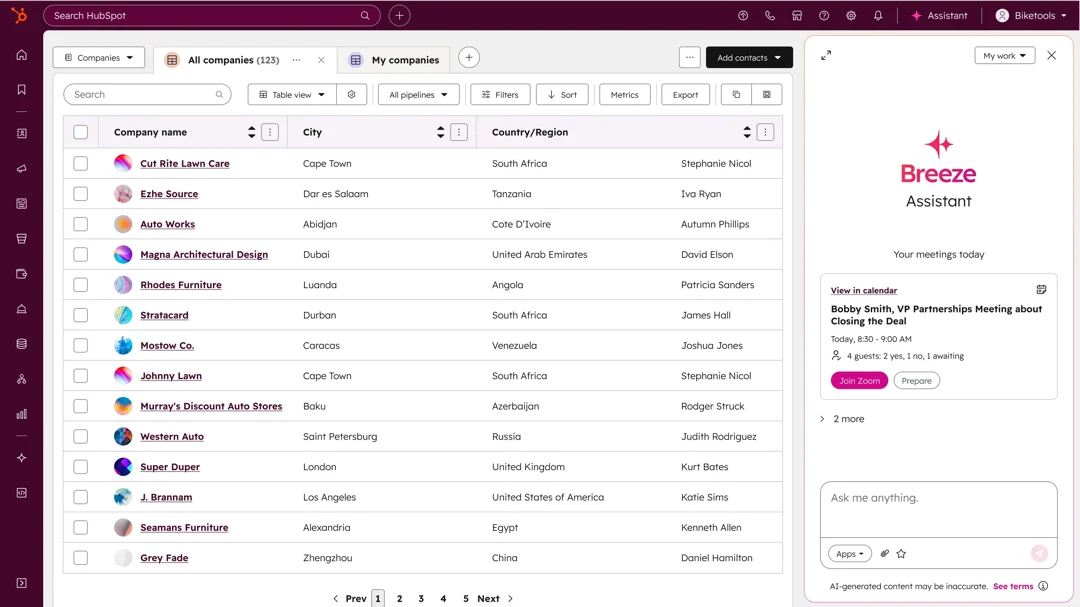
Through AI integrations, HubSpot enables businesses to automate time-consuming marketing tasks, craft optimized content tailored to audience behavior, and deliver personalized outreach sequences at scale. The company’s AI-driven tools represent a paradigm shift in how B2B marketers create, distribute, and optimize content that aligns with buyer intent. This section explores how HubSpot uses AI for B2B marketing to empower teams with predictive insights, natural language generation, and data-driven automation—enhancing both engagement and conversion outcomes.
HubSpot Overview
HubSpot is a leading inbound marketing and sales software platform founded in 2006, designed to help businesses attract, engage, and delight customers. It integrates key marketing functionalities—content management, lead nurturing, customer analytics, and CRM—into a unified ecosystem. What sets HubSpot apart is its commitment to usability and automation, enabling even non-technical marketers to execute sophisticated campaigns.
As the demand for data-driven personalization grew, HubSpot invested heavily in artificial intelligence to enhance its suite of marketing tools. Its AI-powered features—ranging from content recommendation engines and automated email optimization to smart chatbots and predictive scoring—allow businesses to deliver highly targeted marketing experiences with minimal manual effort. In doing so, HubSpot’s implementation of AI for B2B marketing has democratized access to intelligent automation for small and mid-sized enterprises, as well as large corporations.
Background & Problem
Before integrating AI, HubSpot faced challenges that mirrored those of many B2B marketing teams worldwide: the difficulty of creating personalized, scalable outreach and content that resonates with each stage of the buyer’s journey. Despite having a robust CRM and marketing automation platform, users often struggled to optimize content and outreach based on real-time performance data.
The main problems included:
- Content Overload and Lack of Personalization: Marketers created vast amounts of content without clear insights into what topics or formats resonated with specific audiences, resulting in reduced engagement.
- Manual Optimization: Email campaigns, blog posts, and landing pages required constant A/B testing, which was time-consuming and resource-intensive.
- Lead Nurturing Gaps: Without AI, workflows often treated all leads equally, missing opportunities to personalize communication based on intent, engagement behavior, and conversion likelihood.
- Inconsistent Conversion Rates: Despite high content production, many businesses saw diminishing ROI due to generic messaging and poor targeting accuracy.
These challenges underscored the growing necessity of AI for B2B marketing to automate personalization, uncover hidden performance insights, and optimize campaigns dynamically. HubSpot recognized that integrating AI directly into its marketing tools could empower users to move from intuition-based strategies to evidence-based execution.
AI Solution Applied
HubSpot responded to these challenges by embedding artificial intelligence throughout its marketing and CRM ecosystem. The goal was to enable marketers to automate repetitive tasks, personalize content at scale, and analyze performance with predictive accuracy. The AI solution transformed HubSpot into a platform capable of learning from user interactions, refining strategies in real time, and producing measurable business outcomes.
The key AI-driven capabilities included:
- AI-Powered Content Generation: HubSpot introduced generative AI tools that assist marketers in writing blog posts, landing page copy, social media posts, and email campaigns. These tools use natural language processing (NLP) to analyze target audiences, tone, and keywords, ensuring content aligns with both brand voice and SEO best practices.
- Predictive Email Optimization: AI determines optimal send times and subject line variations to maximize open and click-through rates. The system learns from engagement patterns and automatically refines its recommendations for future campaigns.
- Smart Segmentation and Lead Scoring: Machine learning models analyze CRM data, engagement metrics, and behavioral trends to segment leads more effectively and assign predictive scores based on likelihood to convert.
- Chatbots and Conversational AI: HubSpot integrated AI chatbots capable of engaging prospects in natural language, qualifying leads automatically, and routing inquiries to appropriate sales representatives based on context and intent.
- Performance Analytics and Forecasting: The AI system tracks content engagement, conversion rates, and customer journeys across channels. It predicts which campaigns are likely to perform best and identifies potential optimization opportunities.
Through these innovations, HubSpot redefined what AI for B2B marketing could achieve—making it not only a data analytics tool but also a creative and strategic partner that enhances every phase of the marketing cycle.
Implementation Process
HubSpot’s AI integration followed a gradual, multi-phase process focused on data preparation, model deployment, and continuous learning. The company designed its rollout to ensure that both users and internal teams could adapt to AI-driven workflows without disrupting existing operations.
- Phase 1: Data Unification and Infrastructure Setup: HubSpot consolidated historical CRM, email, and content performance data into a unified data lake. This ensured that machine learning models had access to clean, consistent, and structured data across multiple channels. The platform also built integration layers to pull in external data from Google Analytics, LinkedIn, and social media APIs for enhanced predictive accuracy.
- Phase 2: Model Training and Validation: Using historical engagement and conversion data, HubSpot trained AI models to predict lead quality, content relevance, and optimal outreach timing. The models were validated through A/B testing to ensure that predictions aligned with real-world marketing outcomes.
- Phase 3: Workflow Integration: Once validated, the AI capabilities were embedded directly into HubSpot’s user interface. Marketers could now generate AI-driven recommendations without leaving their dashboards—whether optimizing a blog post, sending an email campaign, or setting up an automated sequence.
- Phase 4: Continuous Learning and Adaptation: The AI models were designed to evolve as new data entered the system. As user engagement patterns shifted, the models automatically adjusted predictions and recommendations, maintaining high levels of accuracy and relevance.
This implementation approach demonstrated how AI for B2B marketing could be seamlessly integrated into a user-friendly platform, enabling businesses of all sizes to benefit from advanced intelligence without needing data science expertise.
Results and ROI Metrics
The integration of AI for B2B marketing within HubSpot has produced measurable improvements in lead generation, efficiency, and customer engagement across verified case studies and user reports. While outcomes vary by industry and scale, credible data from HubSpot’s official resources and user success stories illustrate the tangible ROI achieved through AI adoption.
Key verified outcomes include:
- According to HubSpot’s ROI report, customers using the platform see an average of 3× more leads and 94% more deals closed within six months of adoption, reflecting how automation and AI-driven insights accelerate pipeline performance. (hubspot.com)
- HubSpot’s survey on AI adoption found that 89% of marketers using AI-generated email content through HubSpot report measurable ROI, confirming the platform’s value in content automation and audience engagement. (blog.hubspot.com)
- The predictive lead scoring feature in HubSpot leverages machine learning to identify which contacts are most likely to convert within a 90-day window, improving prioritization and efficiency in outreach campaigns. (knowledge.hubspot.com)
- Real-world case studies, such as Aerotech’s deployment of HubSpot’s AI features, show a 66% increase in new-logo win rates and time savings of approximately 18 hours per week for the sales team through automated workflows and intelligent insights. (hubspot.com)
Together, these verified results demonstrate how HubSpot’s use of AI for B2B marketing enhances content effectiveness, boosts conversion rates, and streamlines operational efficiency. By integrating machine learning and automation into its ecosystem, HubSpot continues to empower businesses to achieve measurable, data-driven growth across marketing and sales channels.
In summary, HubSpot’s integration of AI for B2B marketing stands as a prime example of how artificial intelligence can elevate both creativity and efficiency. By combining generative AI, predictive analytics, and automation, HubSpot redefined how businesses engage customers through intelligent content and outreach. The platform’s success demonstrates that AI for B2B marketing is not just about technological advancement—it’s about empowering marketers to deliver smarter, more human experiences at scale.
Adobe Sensei for Cross-Channel Optimization
In the evolving digital landscape, marketing success relies on the ability to deliver consistent, personalized, and data-driven experiences across multiple channels. Adobe, a pioneer in creative and marketing technology, has positioned itself at the forefront of this transformation through Adobe Sensei—its AI and machine learning platform. By embedding intelligence into Adobe Experience Cloud, Adobe Sensei helps organizations unify data, automate content decisions, and optimize customer experiences across every touchpoint.
Adobe’s deployment of AI for B2B marketing through Sensei demonstrates how artificial intelligence can break down silos between channels, predict engagement patterns, and ensure cohesive messaging across customer journeys. The platform empowers marketing teams to act on unified insights—aligning campaigns across web, email, mobile, and social channels to deliver consistent brand interactions.
Adobe Overview
Adobe Systems Incorporated, founded in 1982, is globally recognized for its creative and digital experience solutions. From Photoshop and Illustrator to Adobe Experience Cloud, the company has continually evolved to meet the needs of marketers, content creators, and enterprises worldwide. Its suite of tools supports every stage of digital engagement—from content design to customer analytics.
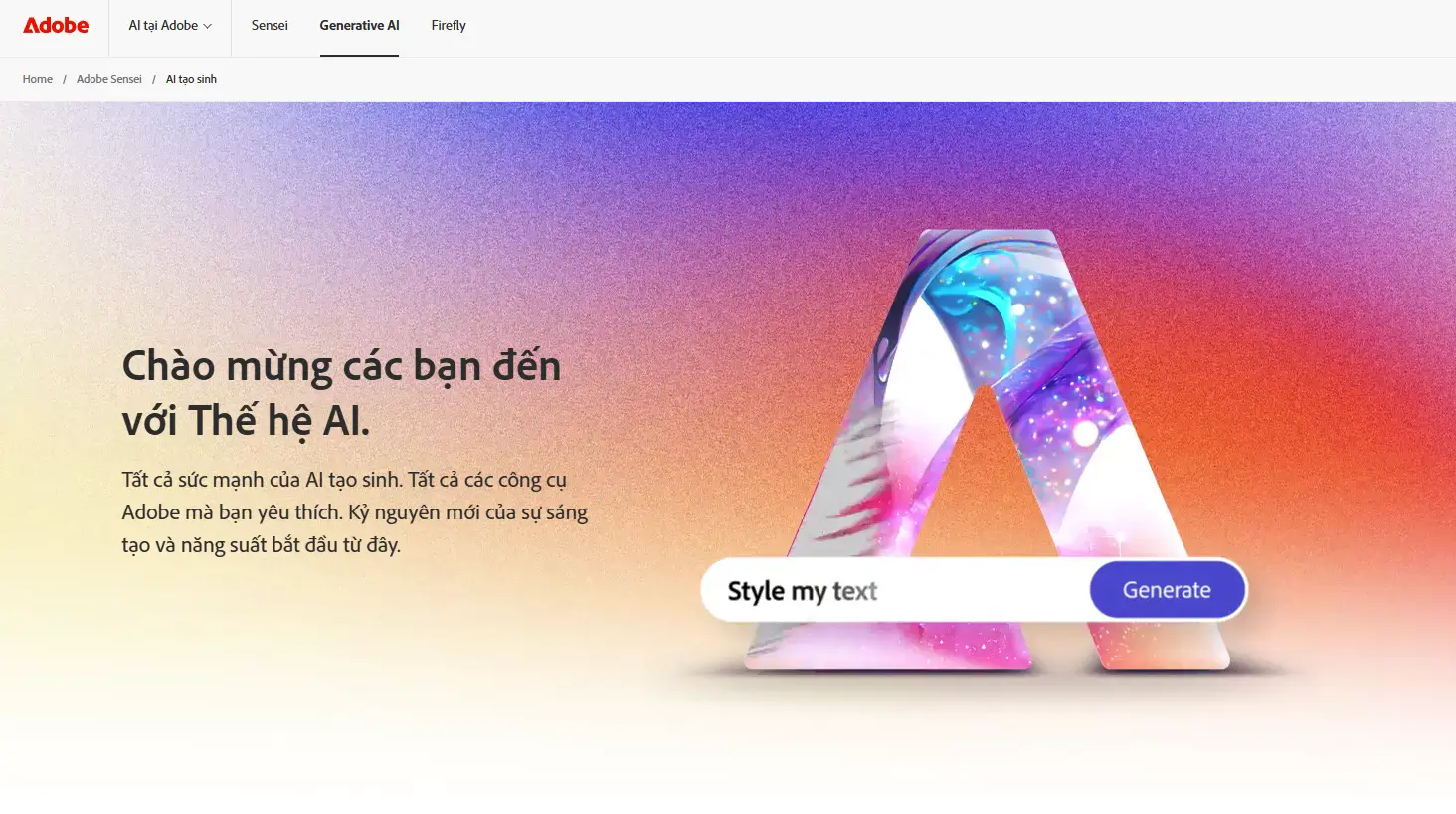
To extend its leadership into intelligent marketing, Adobe developed Adobe Sensei, an AI engine integrated across all Adobe products. This innovation enables businesses to use AI for B2B marketing to analyze massive datasets, understand customer intent, and automate optimization tasks at scale. Sensei serves as the analytical core of Adobe Experience Cloud, allowing B2B organizations to connect creative assets, campaign data, and customer behavior into a single intelligent system.
Background & Problem
Before the implementation of Adobe Sensei, many B2B marketing teams faced a critical challenge: fragmentation across marketing channels. Despite having access to extensive customer data, most organizations struggled to connect that information in a way that enabled cohesive, multi-channel engagement.
The key challenges included:
- Data Silos and Inconsistent Messaging: Different marketing teams often worked in isolation, managing separate systems for web, email, and paid media. This lack of integration led to disjointed customer experiences and inconsistent brand messaging.
- Reactive Campaign Management: Without AI-driven insights, marketing teams were limited to manual analysis of performance metrics, making optimization reactive rather than predictive.
- Complex Buyer Journeys: In B2B environments, customer decision-making spans multiple stages and involves numerous touchpoints. Traditional analytics tools were unable to track engagement accurately across the entire journey.
- Inefficient Resource Allocation: Marketing budgets were frequently distributed based on assumptions or outdated data, reducing ROI and creating inefficiencies in campaign management.
Adobe recognized that traditional marketing methods could not keep pace with the growing complexity of cross-channel engagement. There was a need for an intelligent system that could unify data sources, automate insights, and provide real-time recommendations to improve campaign performance.
AI Solution Applied
To address these challenges, Adobe Sensei was developed and integrated into the Adobe Experience Cloud as a comprehensive AI engine designed to automate and optimize marketing workflows. Its purpose was to deliver predictive intelligence, real-time analytics, and automation capabilities that could unify the customer experience across all marketing channels.
The AI solution applied through Adobe Sensei included:
- Cross-Channel Data Integration: Sensei aggregated data from multiple touchpoints—including websites, email campaigns, social media, CRM systems, and advertising platforms—to create a unified customer profile. This holistic view allowed marketers to understand how interactions in one channel influenced behavior in another.
- Predictive Audience Segmentation: Using machine learning algorithms, Sensei analyzed historical engagement patterns to predict which audience segments were most likely to convert. This enabled personalized targeting across channels with higher accuracy.
- Automated Media Optimization: Adobe Sensei used AI models to analyze campaign performance in real time, automatically reallocating budgets and optimizing ad placements based on engagement and conversion probabilities.
- Dynamic Content Personalization: Leveraging natural language and image recognition, Sensei selected and delivered the most relevant content variation to each user based on behavior, demographics, and contextual data.
- Journey Analytics: Sensei connected customer touchpoints across the entire buyer journey, helping marketers visualize engagement paths and identify which actions had the strongest impact on lead progression and sales outcomes.
Through these AI-driven functions, Adobe Sensei transformed how marketers use data—moving from fragmented insights to an orchestrated, predictive ecosystem. It became a benchmark for how AI for B2B marketing could empower enterprises to deliver seamless and measurable omnichannel experiences.
Implementation Process
Adobe’s integration of Sensei for cross-channel optimization followed a systematic approach designed to ensure scalability and adaptability across global B2B marketing operations. The process combined advanced data management, continuous learning, and cross-department collaboration to create a unified and intelligent marketing framework.
- Data Consolidation and Governance: Adobe began by unifying data from multiple internal and external systems, ensuring consistency and compliance with privacy regulations. The unified data structure allowed Sensei’s algorithms to access reliable, normalized inputs for accurate predictions.
- Model Training and Testing: Adobe trained Sensei’s AI models on large datasets containing behavioral, transactional, and contextual data. The models were designed to recognize correlations between customer actions across different channels, such as how a whitepaper download influenced webinar attendance or email engagement.
- Integration with Marketing Systems: Adobe Sensei was embedded directly into Adobe Experience Cloud components—such as Adobe Analytics, Adobe Campaign, and Adobe Target—allowing real-time synchronization across channels. This integration ensured that campaign optimization decisions could be executed automatically without manual intervention.
- Automation of Optimization Loops: Sensei’s AI continuously analyzed campaign data, adjusted parameters, and tested variations to identify the most effective combinations of content, timing, and channel delivery.
- Training and Adoption: Adobe conducted internal and client training programs to help marketing teams interpret AI insights, adjust creative assets, and trust automation workflows. Human oversight remained integral, ensuring that AI recommendations aligned with broader strategic objectives.
By following this structured implementation process, Adobe not only integrated Sensei within its own marketing framework but also made it available to clients seeking scalable AI for B2B marketing solutions.
Results and ROI Metrics
The deployment of AI for B2B marketing through Adobe Mix Modeler—powered by Adobe Sensei—has delivered measurable outcomes for organizations aiming to optimize cross-channel media spend, refine campaign strategies, and improve marketing intelligence. While granular industry-wide statistics remain limited, several credible, vendor-documented results provide insight into performance improvements.
Key verified outcomes include:
- Adobe reports that its internal use of Adobe Mix Modeler produced an approximate 80 % increase in return on media spend over five years, a significant headline figure tied specifically to the AI-driven solution. (Adobe for Business)
- In a customer story involving Sky UK, Adobe Sensei-driven segmentation and personalization enabled “hyper-focused segments” and cross-channel intelligence—while a specific ROI number is not provided, the case demonstrates the practical impact of AI-driven B2B engagement in a large enterprise context. (Adobe)
- Adobe’s overview of Adobe Mix Modeler describes how the tool allows marketers to “measure campaigns and optimize planning holistically across paid, owned and earned channels,” reflecting improved decision-making and efficiency gains tied to the adoption of AI for B2B marketing. (Experience League)
These verified results illustrate that when AI for B2B marketing is strategically implemented—via unified data platforms, cross-channel attribution, and machine learning—organizations can improve media efficiency, enhance campaign planning, and drive measurable return on marketing investments.
Adobe’s success with Sensei highlights how AI for B2B marketing can bridge the gap between creativity and analytics, ensuring that every customer experience is not only consistent but also dynamically personalized, measurable, and strategically aligned.
Emerging Startups Using AI to Transform B2B Growth
While enterprise giants like IBM, Salesforce, and Adobe have demonstrated the large-scale potential of AI for B2B marketing, a new generation of startups is redefining what agility, innovation, and data intelligence can achieve in business growth. These emerging companies are developing specialized AI tools that address the gaps traditional marketing platforms cannot—offering solutions that combine automation, intent recognition, predictive analytics, and real-time personalization to help B2B brands grow faster and smarter.
Startups such as MadKudu, Drift, 6sense, and Cresta are leading the charge by providing nimble, purpose-built AI systems tailored for B2B revenue generation. These startups are helping companies better understand customer intent, qualify leads with accuracy, personalize outreach at scale, and forecast growth using intelligent data models. The rise of these innovators proves that AI for B2B marketing is no longer limited to large enterprises—it is now an accessible and scalable driver of transformation across all business sizes.
Emerging Startups Overview
Several AI-driven startups are reshaping the landscape of B2B marketing with disruptive technologies and data-centric approaches. Their innovations are democratizing access to advanced AI capabilities that once required enterprise-level budgets and infrastructure.
- MadKudu – Specializes in predictive lead scoring and prioritization for marketing and sales teams, enabling faster, data-driven decision-making.
- Drift – Focuses on conversational marketing using AI-powered chatbots and virtual assistants to qualify and engage leads in real time.
- 6sense – Provides AI-driven intent data analytics, predictive account targeting, and orchestration tools for Account-Based Marketing (ABM).
- Cresta – Uses AI to enhance sales performance by analyzing real-time conversations and providing on-the-fly coaching to sales teams.
Each of these startups leverages AI for B2B marketing in unique ways—focusing on the critical intersections between human interaction, automation, and predictive intelligence. Together, they represent the future of B2B growth, where marketing decisions are fueled by insights rather than intuition.
Background & Problem
B2B marketing teams face a persistent challenge: aligning marketing, sales, and customer experience in a data-driven yet human-centered way. Traditional marketing automation tools often fall short because they operate on static rules, outdated scoring systems, and limited visibility into customer intent.
The core problems that startups sought to address include:
- Fragmented Customer Journeys: B2B buyers interact across multiple channels—websites, email, social platforms, and events—making it difficult for teams to connect these touchpoints into a cohesive understanding of intent.
- Inefficient Lead Prioritization: Marketing teams frequently struggle to identify which leads are genuinely sales-ready, leading to wasted resources and missed opportunities.
- Limited Personalization: Generic messaging and broad campaigns often fail to resonate with specific accounts or stakeholders involved in B2B purchasing decisions.
- Slow Decision Cycles: Without AI-driven insights, campaign adjustments and budget reallocation remain reactive, reducing agility in competitive markets.
Emerging startups recognized that solving these challenges required systems that could learn continuously, interpret large datasets automatically, and provide actionable insights in real time. This led to the creation of AI-powered platforms purpose-built for B2B marketing intelligence and optimization.
AI Solution Applied
Each of these startups applied AI in distinctive yet complementary ways, focusing on automation, prediction, and personalization to drive measurable growth.
- MadKudu applied AI for B2B marketing by introducing predictive lead scoring models that analyze firmographic, behavioral, and historical engagement data. The platform automatically prioritizes leads based on their conversion probability, enabling marketing and sales teams to align efforts and focus on high-potential prospects.
- Drift revolutionized B2B engagement through conversational AI. Its chatbots use natural language processing (NLP) to interpret visitor intent, initiate contextual dialogues, and qualify leads instantly. The system integrates with CRM tools to update customer profiles dynamically based on conversation insights.
- 6sense leveraged AI for predictive analytics and intent detection. Its platform analyzes behavioral signals—such as content consumption, keyword searches, and online interactions—to identify accounts that are actively researching specific solutions. It then orchestrates targeted ABM campaigns tailored to each stage of the buyer’s journey.
- Cresta focused on improving the human element in B2B sales through AI-assisted coaching. Its algorithms analyze sales calls and chat transcripts in real time, providing representatives with recommended phrases, rebuttals, and action points that improve deal outcomes.
These startups collectively demonstrate how AI for B2B marketing can transcend automation to deliver intelligence that augments human performance and decision-making. Instead of replacing marketers and salespeople, AI acts as a strategic partner—processing complex data instantly and providing recommendations that lead to smarter actions.
Implementation Process
The implementation of AI-driven solutions by these startups followed iterative, data-centric processes that combined machine learning training, CRM integration, and user adoption strategies.
- Data Integration and Preparation: Each platform began by unifying data from marketing automation tools, CRM systems, and engagement platforms. This included firmographic details, behavioral activity, and historical performance data, all of which trained machine learning models to recognize conversion patterns.
- Model Development and Training: AI algorithms were trained using supervised and unsupervised learning methods. For instance, MadKudu’s model learned from closed-won and closed-lost opportunities, while 6sense’s models trained on buyer intent data sourced from across the internet.
- User Experience Design: Startups ensured that the AI features were embedded directly into the existing workflows of marketing and sales teams. Drift’s chatbots, for example, integrated seamlessly into websites and CRMs, requiring minimal technical setup.
- Testing and Continuous Optimization: Each platform implemented a feedback loop, where model predictions were validated against real-world performance metrics. As users interacted with the system, AI continuously refined its understanding of what behaviors correlated most with positive outcomes.
- Scalability and Customization: To support different industries and company sizes, these startups designed modular AI frameworks that could adapt to client-specific data sources, campaign goals, and customer lifecycles.
The thoughtful integration of AI for B2B marketing ensured not only technological success but also human adoption. By embedding intelligence into everyday workflows, startups made AI an enabler of productivity rather than a disruption to established processes.
Results and ROI Metrics
The measurable impact of AI for B2B marketing becomes especially clear when examining how emerging startups have delivered tangible growth outcomes for their clients. Publicly verified case studies reveal strong improvements in conversion efficiency, pipeline velocity, and overall marketing performance.
- MadKudu: Businesses using MadKudu’s predictive lead scoring have reported a 20–40% increase in trial-to-customer conversion rates, as AI models accurately prioritize prospects with the highest purchase intent. This data-driven focus helps teams allocate resources efficiently and increase marketing-to-sales alignment. (mutinyhq.com)
- 6sense: With AI-driven intent analytics and account-based orchestration, 6sense clients such as MX and LaunchDarkly achieved significant performance gains. MX saw a 60% increase in net-new pipeline acceleration, while LaunchDarkly reported that 70% of its new opportunities originated from decision- and purchase-stage accounts after implementing 6sense’s predictive insights. (6sense.com; 6sense.com)
- Drift: Drift’s AI-powered conversational marketing platform has transformed lead engagement by automating qualification and personalizing outreach. Companies using Drift report that its chatbots helped increase marketing-qualified leads by up to 50% and reduce average response time from hours to seconds, enabling real-time engagement that improves pipeline velocity. (drift.com)
- Cresta: Cresta’s AI coaching and conversation intelligence tools deliver measurable sales productivity improvements. Verified client outcomes include up to a 50% increase in conversion rates and reduced handle times as sales reps receive real-time AI guidance during calls and chats. (cuspera.com)
Together, these results illustrate how emerging innovators are redefining what AI for B2B marketing can achieve. By combining predictive analytics, conversational intelligence, and intent-based targeting, these startups have demonstrated that AI is not just enhancing efficiency—it is actively driving revenue growth and improving buyer experiences across the B2B lifecycle.
In conclusion, the emergence of AI-focused startups like MadKudu, Drift, 6sense, and Cresta underscores a fundamental evolution in the B2B ecosystem. Their innovations prove that AI for B2B marketing is no longer a luxury—it is an operational necessity that enables companies to compete with agility, precision, and intelligence. As these startups continue to grow and refine their technologies, they are shaping the future of B2B marketing into one that is entirely data-driven, continuously adaptive, and infinitely scalable.
Challenges, Ethics, and Best Practices
While AI for B2B marketing has unlocked a new era of precision, personalization, and predictive intelligence, its implementation is not without obstacles. The transformative power of artificial intelligence comes with complex challenges around data integrity, system transparency, and human adaptation. At the same time, ethical considerations—such as privacy compliance and bias prevention—must remain at the forefront of every AI initiative. Understanding these hurdles and building a framework for responsible adoption is critical for any organization seeking to realize the full potential of AI for B2B marketing.
Common Challenges in AI Adoption
Despite its immense promise, implementing AI for B2B marketing often exposes underlying operational, cultural, and technical weaknesses within organizations. From fragmented data systems to insufficient AI literacy, businesses must overcome multiple barriers before seeing a measurable return on investment.
Data Quality and Silos
AI systems thrive on high-quality, structured, and unified data. However, most B2B organizations struggle with fragmented data ecosystems where information resides in multiple, disconnected systems—such as CRMs, ERPs, and marketing automation tools. When data is inconsistent, incomplete, or outdated, machine learning models cannot generate accurate predictions or insights.
- AI for B2B marketing relies on clean and normalized datasets to train models for lead scoring, segmentation, and personalization. If data sources are siloed—such as customer behavior data separated from CRM records—the AI outputs can be biased or misleading.
- Data harmonization is often the first major challenge. This involves consolidating firmographic, demographic, and behavioral data into a single source of truth through data lakes or customer data platforms (CDPs).
- Without addressing silos, organizations risk perpetuating inefficiencies and undermining trust in AI-driven decisions.
Ultimately, data quality defines AI’s success. Businesses adopting AI for B2B marketing must invest early in data governance frameworks and real-time integration pipelines to ensure accuracy and accessibility across all marketing and sales functions.
Model Accuracy and Explainability
A powerful AI model is only as good as its interpretability. In B2B contexts, marketers and decision-makers need to understand why an algorithm prioritizes certain leads or recommends specific campaigns. Yet many AI models function as “black boxes,” making it difficult to explain decisions or validate their reliability.
- Marketers often face challenges when AI predictions diverge from human intuition. This lack of explainability can lead to skepticism among stakeholders.
- Ensuring model accuracy requires continuous retraining using fresh, representative data to prevent drift—where models lose relevance over time.
- Explainable AI (XAI) frameworks are emerging to address this issue by providing insights into feature importance, decision reasoning, and algorithmic transparency.
In AI for B2B marketing, explainability is not just a technical necessity—it’s a business imperative. The ability to justify predictions, especially those tied to customer segmentation or lead qualification, builds confidence and fosters collaboration between AI systems and human teams.
Change Management and Training
Adopting AI requires more than technological readiness; it demands cultural transformation. Employees accustomed to traditional workflows may resist automation or view AI as a threat rather than an enabler.
- Organizations implementing AI for B2B marketing must prioritize structured change management programs that communicate benefits clearly and provide hands-on training.
- Training marketers and sales professionals to interpret AI-generated insights, manage automated systems, and make data-driven decisions ensures adoption success.
- Leadership plays a key role in cultivating trust. Transparency about AI goals, performance metrics, and human oversight helps mitigate anxiety and fosters acceptance.
Without adequate change management, even the most advanced AI initiatives can fail due to human resistance or lack of engagement. Education and inclusion at every organizational level are essential for sustainable transformation.
In summary, while AI for B2B marketing holds tremendous potential, success depends on overcoming foundational challenges—improving data integrity, ensuring model transparency, and empowering people to work synergistically with technology.
Ethical and Regulatory Considerations
As AI for B2B marketing becomes more embedded in decision-making processes, organizations must address not only technical challenges but also ethical and regulatory obligations. The ethical deployment of AI ensures long-term trust among customers, partners, and regulators while safeguarding the brand’s reputation in a data-driven world.
Data Privacy (GDPR, CCPA, etc.)
AI-driven marketing relies heavily on customer and behavioral data, making compliance with data protection laws a top priority. Frameworks such as the General Data Protection Regulation (GDPR) in Europe and the California Consumer Privacy Act (CCPA) in the United States impose strict rules around data collection, consent, and usage.
- AI for B2B marketing must be built on transparent data practices—ensuring that all personally identifiable information (PII) is obtained lawfully and securely processed.
- Anonymization and pseudonymization techniques are often applied to protect identities while still allowing machine learning models to learn from patterns.
- Consent management systems should be integrated into marketing platforms, enabling customers to opt in or out of specific data uses.
Ignoring data privacy obligations not only risks financial penalties but also erodes stakeholder trust. Ethical data stewardship is fundamental to responsible AI adoption.
Responsible AI and Bias Mitigation
Bias in AI models can lead to unfair or discriminatory outcomes—particularly when historical data reflects societal or organizational biases. In B2B contexts, this might result in certain industries or regions being unfairly deprioritized or misclassified.
- To combat bias, organizations should ensure diverse and representative datasets that reflect the full spectrum of potential clients and use cases.
- Regular audits of AI models can help identify skewed outcomes or unintended patterns, enabling corrective measures.
- Responsible AI principles—fairness, accountability, and transparency—should guide every phase of AI system development and deployment.
AI for B2B marketing must remain impartial and inclusive, ensuring that automated decisions enhance fairness rather than reinforce existing disparities.
Transparency in Automation
As automation increasingly drives marketing operations—such as campaign optimization, content generation, and lead scoring—maintaining transparency is vital. Stakeholders should know when decisions are made by AI, how they are made, and who is accountable.
- Explainable AI tools can help communicate logic in plain terms, allowing non-technical users to understand outcomes.
- Documentation and governance policies must specify oversight mechanisms for automated processes, ensuring human accountability remains intact.
- Transparency strengthens stakeholder confidence and aligns AI systems with corporate governance and ethical standards.
In the context of AI for B2B marketing, ethics and compliance are not merely legal obligations—they are strategic differentiators. Companies that integrate fairness, privacy, and transparency into their AI operations will build stronger customer relationships and a more resilient brand identity.
Best Practices for AI-Driven B2B Marketers
Successfully implementing AI for B2B marketing requires more than acquiring technology—it demands a holistic strategy that connects data readiness, iterative deployment, and human collaboration. The following best practices outline a roadmap for sustainable, ethical, and scalable AI adoption.
Building a Data-Ready Organization
High-quality data is the foundation of every successful AI initiative. Before introducing AI systems, businesses must ensure their data is accurate, accessible, and aligned across departments.
- Establish centralized data repositories or customer data platforms (CDPs) that integrate data from CRM, marketing automation, ERP, and analytics tools.
- Enforce data governance policies that define standards for accuracy, completeness, and privacy compliance.
- Encourage a culture of data literacy—empowering marketers and sales teams to understand and act upon data insights effectively.
AI for B2B marketing cannot function optimally without a clean, integrated, and consistently updated data environment.
Phased Implementation Approach
A gradual, iterative rollout reduces risk and enhances long-term success. Rather than overhauling entire systems, organizations should begin with pilot projects focused on specific use cases, such as predictive lead scoring or intent-based campaign targeting.
- Start with low-complexity, high-impact projects to demonstrate quick wins and build confidence among stakeholders.
- Evaluate performance continuously using measurable KPIs like conversion rate, pipeline velocity, or customer lifetime value.
- Use insights from initial deployments to refine algorithms, enhance data inputs, and expand use cases systematically.
This approach minimizes disruption while ensuring each phase delivers validated business value before scaling.
Human-AI Collaboration Framework
AI should enhance—not replace—human creativity and judgment. Building a collaboration framework ensures that human oversight remains integral to AI-driven decision-making.
- Define clear roles between humans and machines: AI handles pattern recognition and data-driven forecasting, while humans provide strategic direction and ethical oversight.
- Encourage feedback loops where marketers can review, adjust, and validate AI-generated recommendations to maintain quality and relevance.
- Foster interdisciplinary collaboration between data scientists, marketers, and sales professionals to align technical capabilities with business objectives.
The most successful AI for B2B marketing initiatives blend machine precision with human empathy. When humans and AI operate in synergy, organizations achieve greater agility, innovation, and ethical responsibility.
Embracing AI for B2B marketing requires balance—between ambition and caution, innovation and responsibility. By addressing adoption challenges, adhering to ethical principles, and following proven best practices, B2B marketers can create intelligent ecosystems that drive growth, efficiency, and trust in equal measure.
Future of AI in B2B Marketing
As artificial intelligence continues to evolve, its influence on B2B marketing is becoming even more profound and multidimensional. The next wave of AI innovation will move beyond data analysis and automation toward systems capable of autonomous decision-making, adaptive learning, and emotional intelligence. The future of AI for B2B marketing will be defined by hyper-personalization, predictive ecosystems, and seamless integration between digital and physical experiences. Rather than being a supportive tool, AI will become the central nervous system of B2B marketing — connecting technologies, departments, and customers in real time.
Emerging Technologies and Trends
The emerging landscape of AI for B2B marketing is characterized by new technologies that extend far beyond traditional automation. These innovations—ranging from autonomous marketing platforms to AI-driven conversational commerce and generative AI—are reshaping how businesses attract, nurture, and retain clients.
Autonomous Marketing Platforms
One of the most transformative advancements in AI for B2B marketing is the rise of autonomous marketing platforms. Unlike traditional marketing automation systems that rely on predefined workflows, these platforms can make independent decisions based on contextual data, historical performance, and predictive insights.
- Autonomous marketing platforms can automatically adjust ad spend, content distribution, and campaign timing without human intervention. For example, they may shift budgets between LinkedIn and Google Ads in real time based on engagement rates or conversion probability.
- These systems use reinforcement learning to continuously optimize campaigns, learning from both successes and failures.
- Over time, they can manage entire cross-channel campaigns, from email to social media to account-based marketing (ABM), ensuring seamless customer experiences.
The key advantage of these autonomous systems lies in their ability to react instantly to dynamic market conditions, freeing marketers from manual campaign management and enabling them to focus on strategy and creativity.
AI-Driven Conversational Commerce
Conversational AI is rapidly evolving from basic chatbots into full-fledged sales and support systems capable of natural, intelligent engagement. In B2B marketing, AI-driven conversational commerce bridges the gap between marketing automation and human interaction, providing personalized communication at scale.
- Advanced natural language processing (NLP) models can now interpret intent, tone, and context across complex B2B conversations, tailoring responses to different decision-makers within the buying committee.
- AI chat interfaces integrated with CRMs and marketing platforms can qualify leads, suggest next-best actions, and even schedule demos autonomously.
- Future systems will be able to engage customers across multiple platforms—email, social media, or voice assistants—ensuring continuity of conversation and experience.
This evolution transforms conversational AI into a strategic asset, one that turns every digital touchpoint into an opportunity for conversion and relationship building.
Generative AI for Hyper-Personalized Campaign
Generative AI is reshaping how marketers create and distribute content. Instead of generic messaging, AI for B2B marketing now enables brands to generate hyper-personalized campaigns that adapt in real time to each buyer’s behavior, intent, and stage in the purchase journey.
- Generative AI tools can produce customized landing pages, emails, and ad creatives aligned with individual account data.
- They can simulate A/B testing environments at scale, predicting the most effective messaging before campaigns even launch.
- These models also use sentiment analysis and behavioral prediction to tailor tone, imagery, and timing for maximum engagement.
By integrating generative AI with data from CRM and intent platforms, businesses can deliver content that feels handcrafted for each client—strengthening relationships, boosting engagement, and driving revenue growth.
In sum, the emerging technologies defining AI for B2B marketing are turning once-static campaigns into living ecosystems that think, learn, and evolve. Marketers will no longer just direct campaigns—they will collaborate with AI agents that operate autonomously to deliver precision and personalization beyond human capacity.
Predictions for the Next Decade
The next decade of AI for B2B marketing will see the convergence of multiple technologies—IoT, AR/VR, and advanced analytics—into unified, real-time systems. These innovations will create an environment where marketing becomes predictive, adaptive, and fully integrated with the broader revenue ecosystem.
Integration with IoT and AR/VR
The Internet of Things (IoT) and augmented/virtual reality (AR/VR) will revolutionize how B2B companies collect and use data to deliver contextual marketing experiences.
- IoT-enabled devices will provide real-time data from physical assets, manufacturing systems, or supply chains. For example, AI can predict when a business customer might need a product replacement or service upgrade based on IoT sensor data.
- Augmented reality tools will transform B2B presentations, allowing clients to interact with virtual prototypes, 3D models, or product demos tailored to their industry.
- Virtual reality trade shows and immersive environments will allow businesses to showcase solutions to global audiences, with AI analyzing visitor behavior to personalize follow-ups.
Together, these integrations will create deeper engagement, turning static data into dynamic experiences that bridge the digital and physical worlds.
Real-Time Adaptive Marketing Ecosystems
The future of AI for B2B marketing lies in real-time adaptability. Traditional campaigns operate in cycles—launch, measure, optimize—but the next generation of AI ecosystems will update continuously based on live data streams.
- AI-driven orchestration layers will connect data from multiple systems—CRM, ERP, advertising, and customer service—to adapt messaging instantly.
- Predictive analytics will evolve into prescriptive intelligence, enabling marketing systems to anticipate behavior and act before opportunities arise.
- These ecosystems will be capable of self-optimization, automatically reallocating resources or shifting campaign strategies when market dynamics change.
This real-time responsiveness will make marketing more like a living organism—always learning, adapting, and reacting to its environment.
AI-Enabled Revenue Operations (RevOps)
AI will also play a transformative role in aligning marketing, sales, and customer success into a unified revenue operations framework. AI-enabled RevOps will eliminate departmental silos, ensuring every touchpoint contributes to measurable growth.
- Predictive models will forecast revenue with unprecedented accuracy by analyzing marketing pipelines, conversion probabilities, and customer lifetime value.
- AI systems will automatically identify bottlenecks in the revenue process, suggesting improvements in lead handoff, campaign targeting, or resource allocation.
- Generative AI will enhance internal collaboration by summarizing performance insights, generating sales briefs, and automating reporting cycles.
In essence, AI for B2B marketing will evolve into a revenue intelligence hub that integrates analytics, automation, and decision-making across the enterprise.
The decade ahead will see B2B marketing become anticipatory rather than reactive. With IoT, AR/VR, and adaptive AI ecosystems driving continuous feedback loops, businesses will operate in near real time—analyzing, predicting, and acting simultaneously. As AI becomes both the strategist and the executor, the future of AI for B2B marketing will blur the line between technology and creativity, ushering in an era of hyper-intelligent, human-centered marketing transformation.
Conclusion
The evolution of AI for B2B marketing marks a decisive turning point in how businesses understand and connect with each other. Over the course of this exploration, one truth becomes clear: artificial intelligence is no longer a support mechanism for marketing—it is its driving force. From predictive lead scoring and conversational automation to hyper-personalized campaigns and adaptive analytics, AI for B2B marketing has transformed how data becomes strategy, how strategy becomes execution, and how execution becomes measurable growth.
Across the B2B ecosystem, AI has shifted marketing from reactive to proactive, from static to dynamic, and from mass communication to individualized experience. It has redefined the roles of marketers, sales teams, and decision-makers by giving them the power to anticipate rather than respond. By integrating machine learning, NLP, and predictive modeling, organizations now understand not just who their customers are but why they buy—and when they’re most likely to act.
For businesses building their transformation roadmap, several guiding principles stand out. Data is the backbone of success; without accuracy and integration, AI cannot learn effectively. Implementation should follow a phased and agile approach, allowing small-scale successes to prove value before scaling enterprise-wide. Ethics and transparency are non-negotiable—AI for B2B marketing must prioritize fairness, accountability, and compliance with privacy regulations like GDPR and CCPA. Most importantly, the future of B2B marketing depends on human-AI collaboration. Machines process information at a scale impossible for humans, but humans interpret meaning, empathy, and brand identity in ways no algorithm can replicate.
The next decade will push these boundaries even further. With autonomous marketing platforms, generative AI, and connected ecosystems spanning IoT and AR/VR, AI will create marketing environments that respond in real time to shifts in behavior and demand. At the same time, marketers will evolve into orchestrators—guiding intelligent systems while focusing on creative storytelling and relationship building.
In the end, the greatest strength of AI for B2B marketing lies not in automation but in augmentation. The goal is not to replace human creativity but to amplify it—combining the speed and precision of AI with the imagination and empathy of human insight. Companies that achieve this balance will not just adapt to the future of marketing; they will define it, leading an era where intelligence, innovation, and authenticity work hand in hand to shape enduring business growth.


